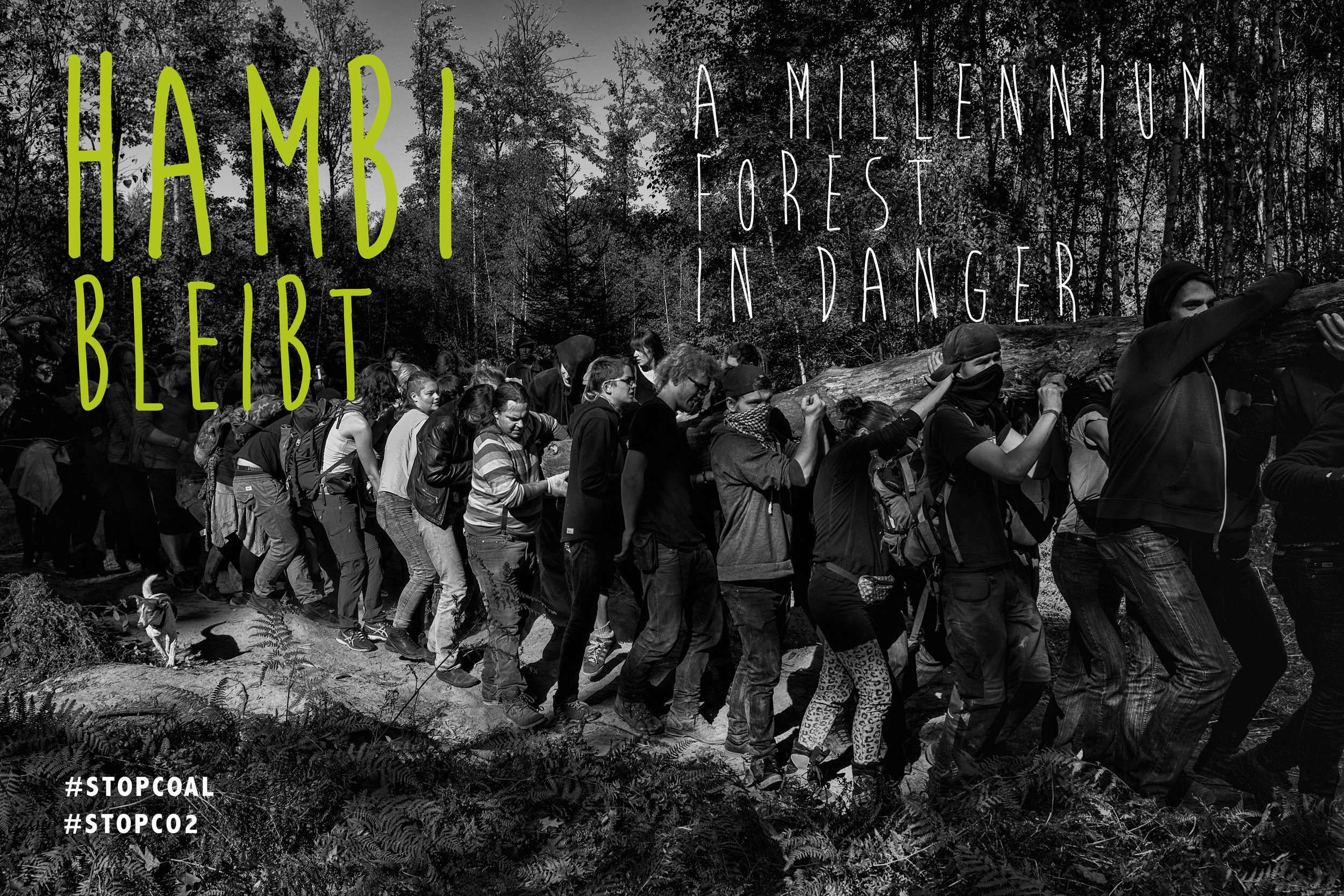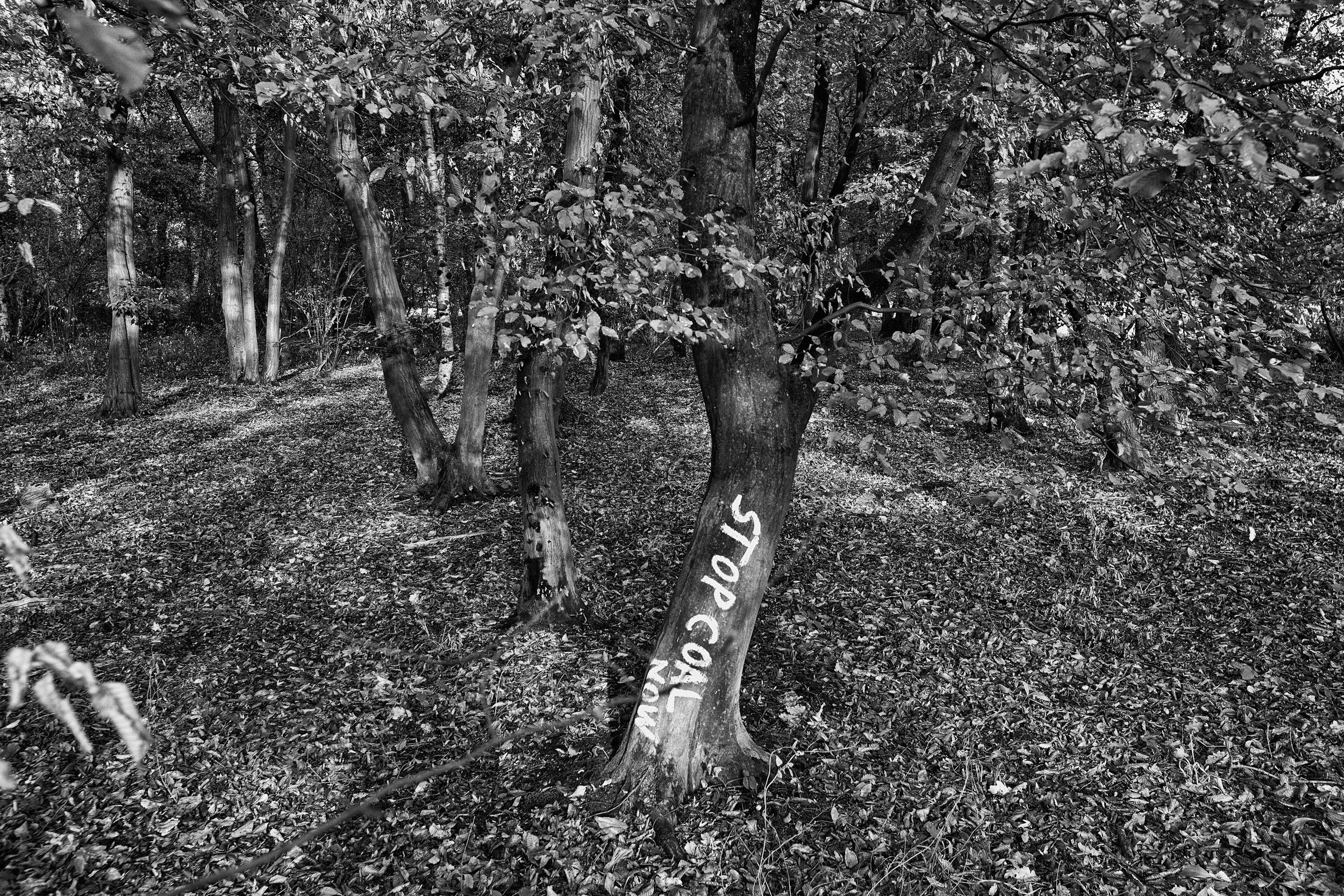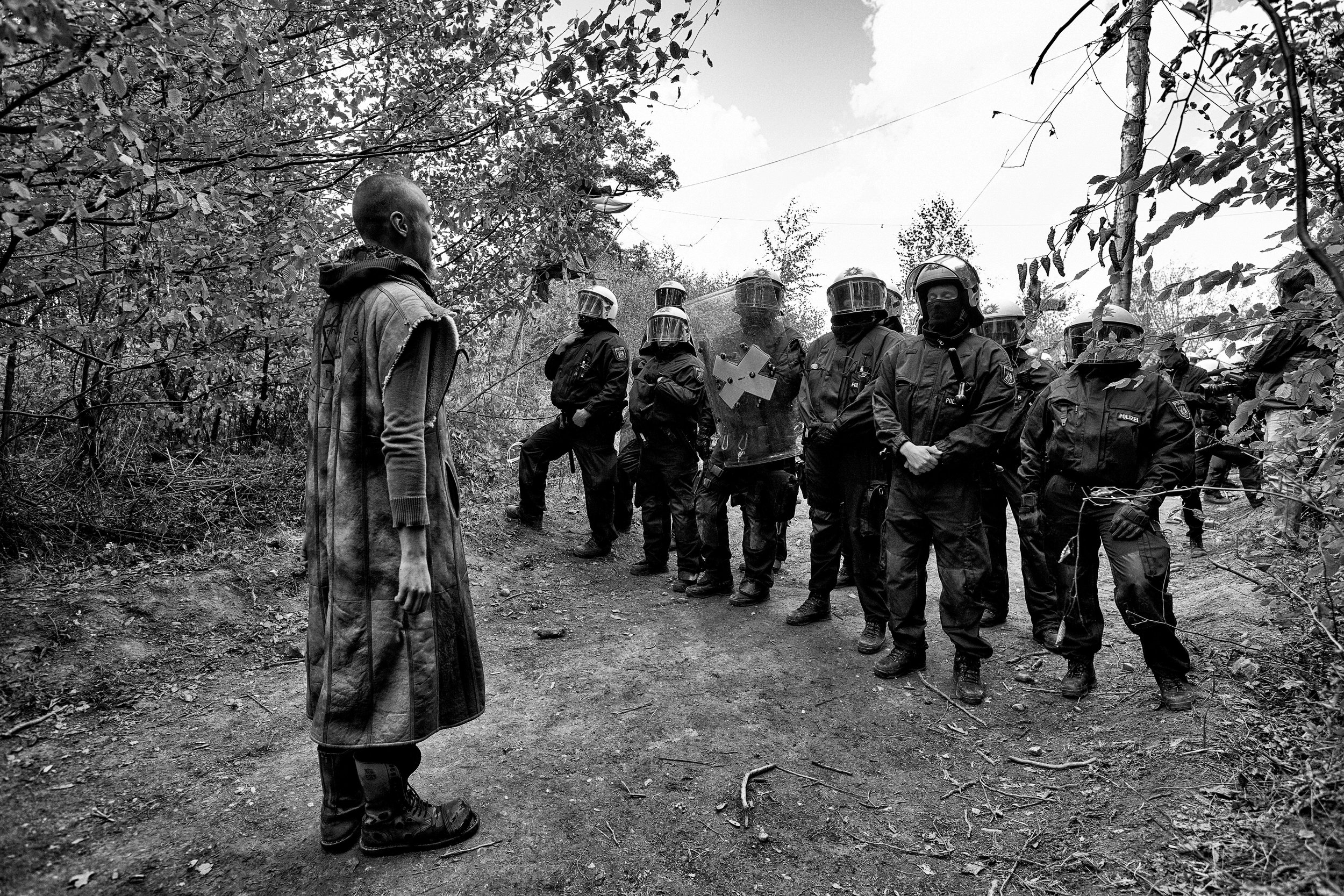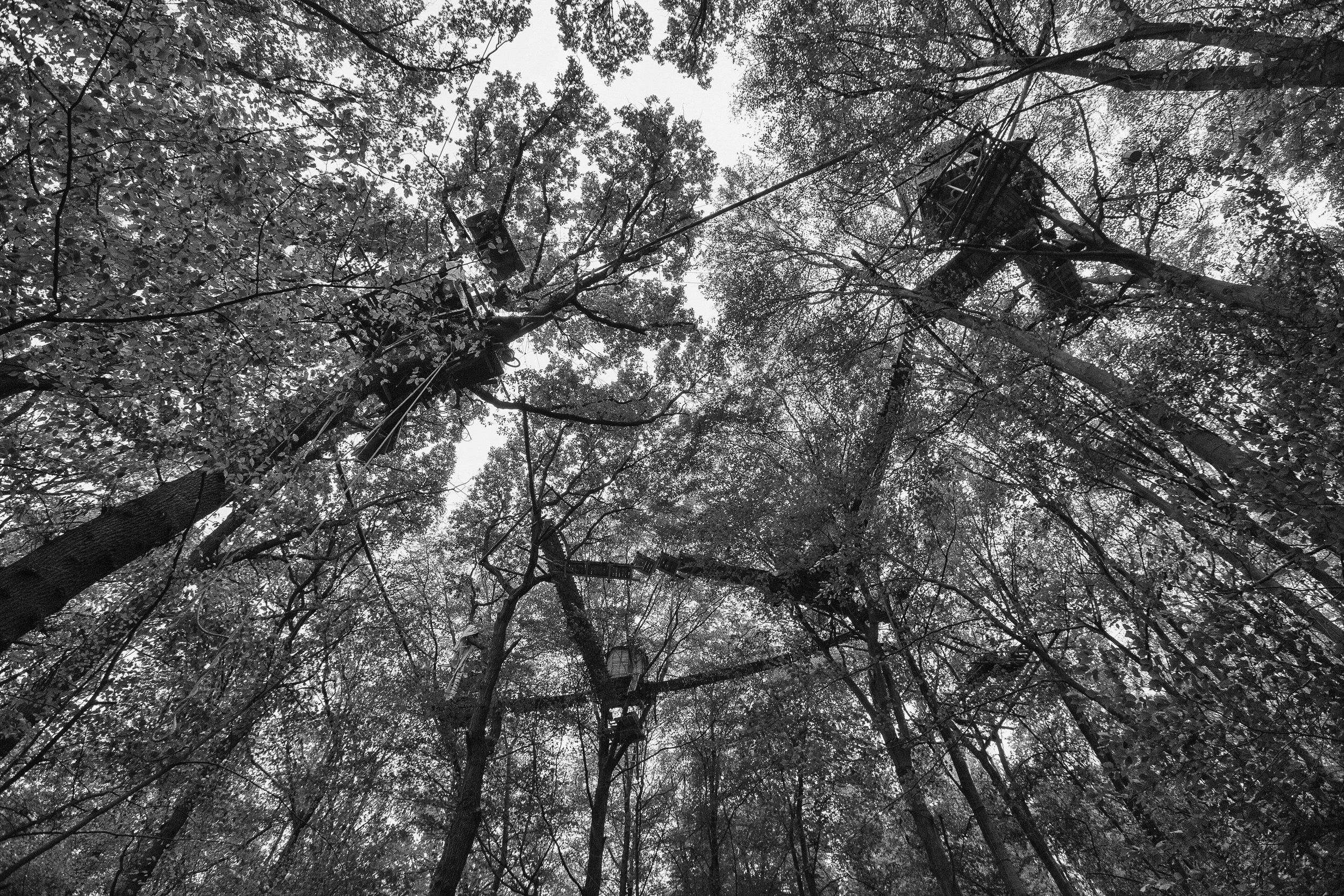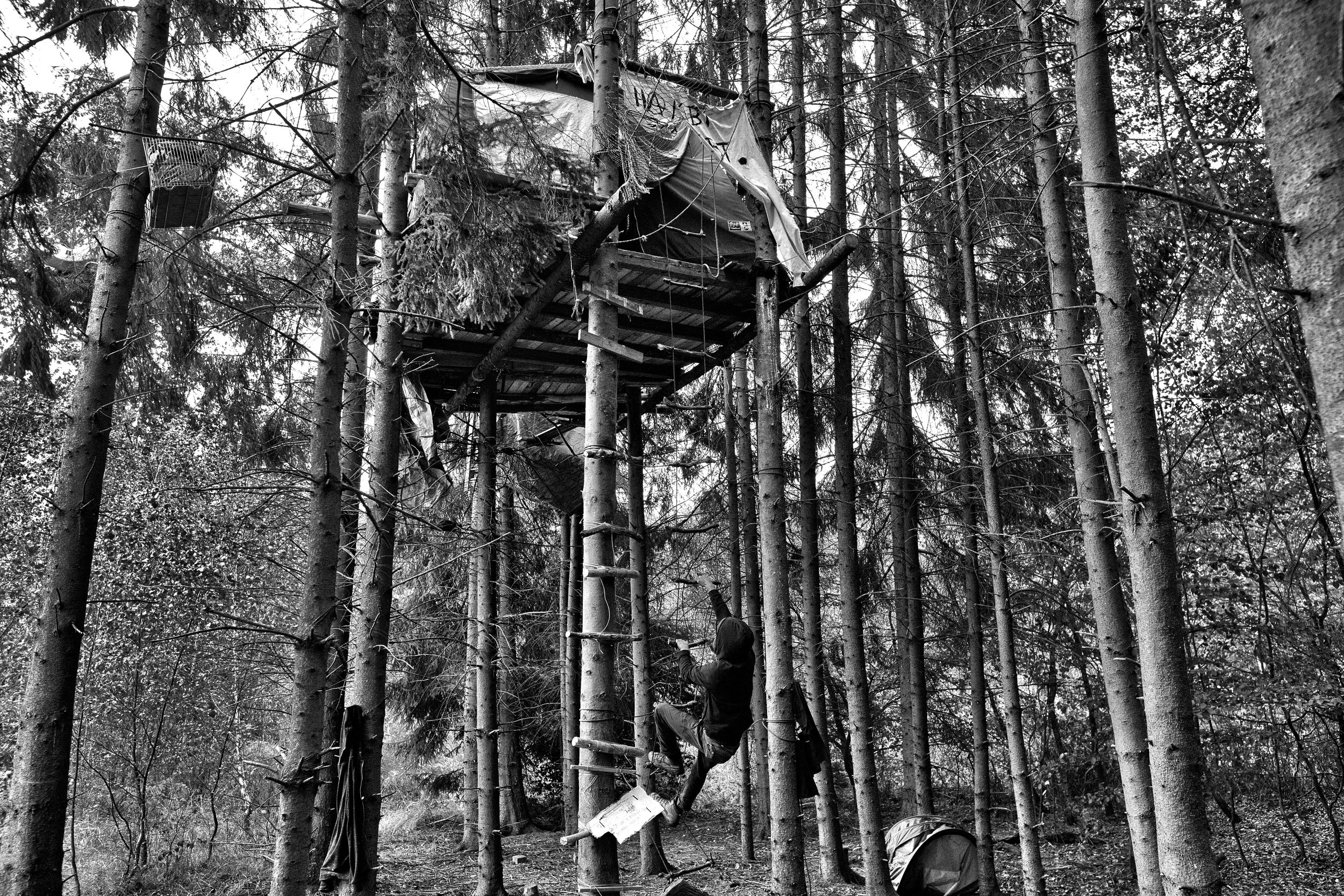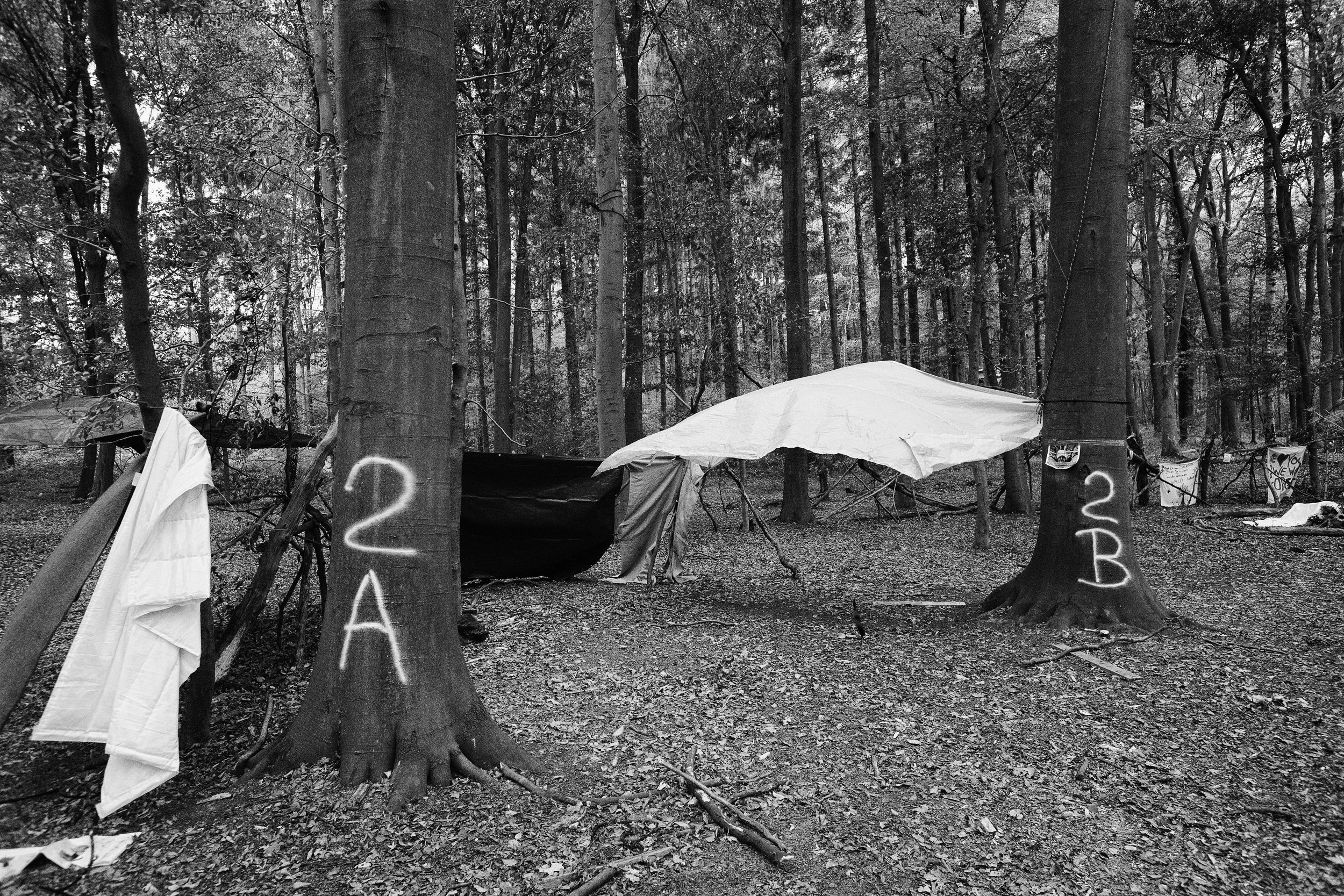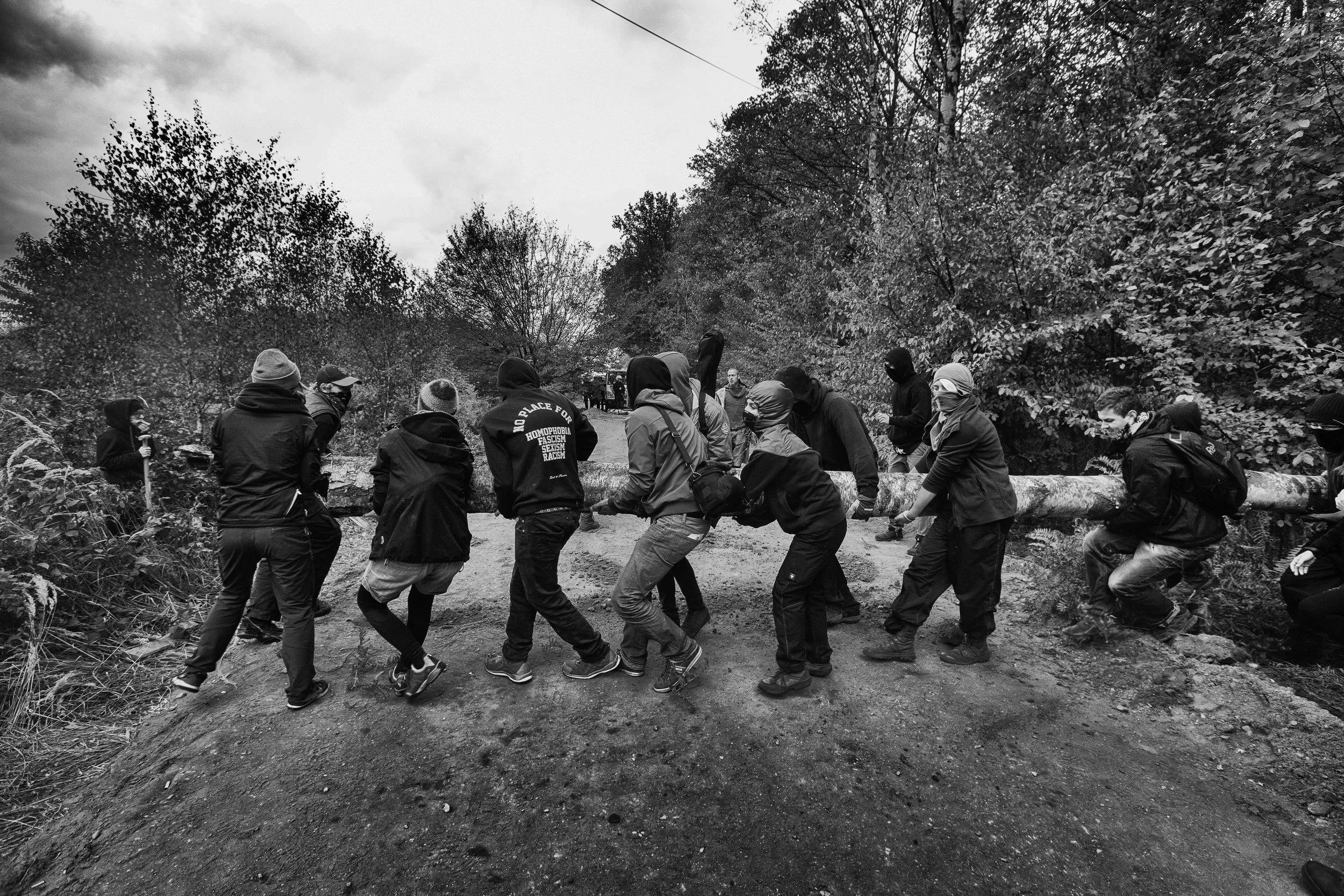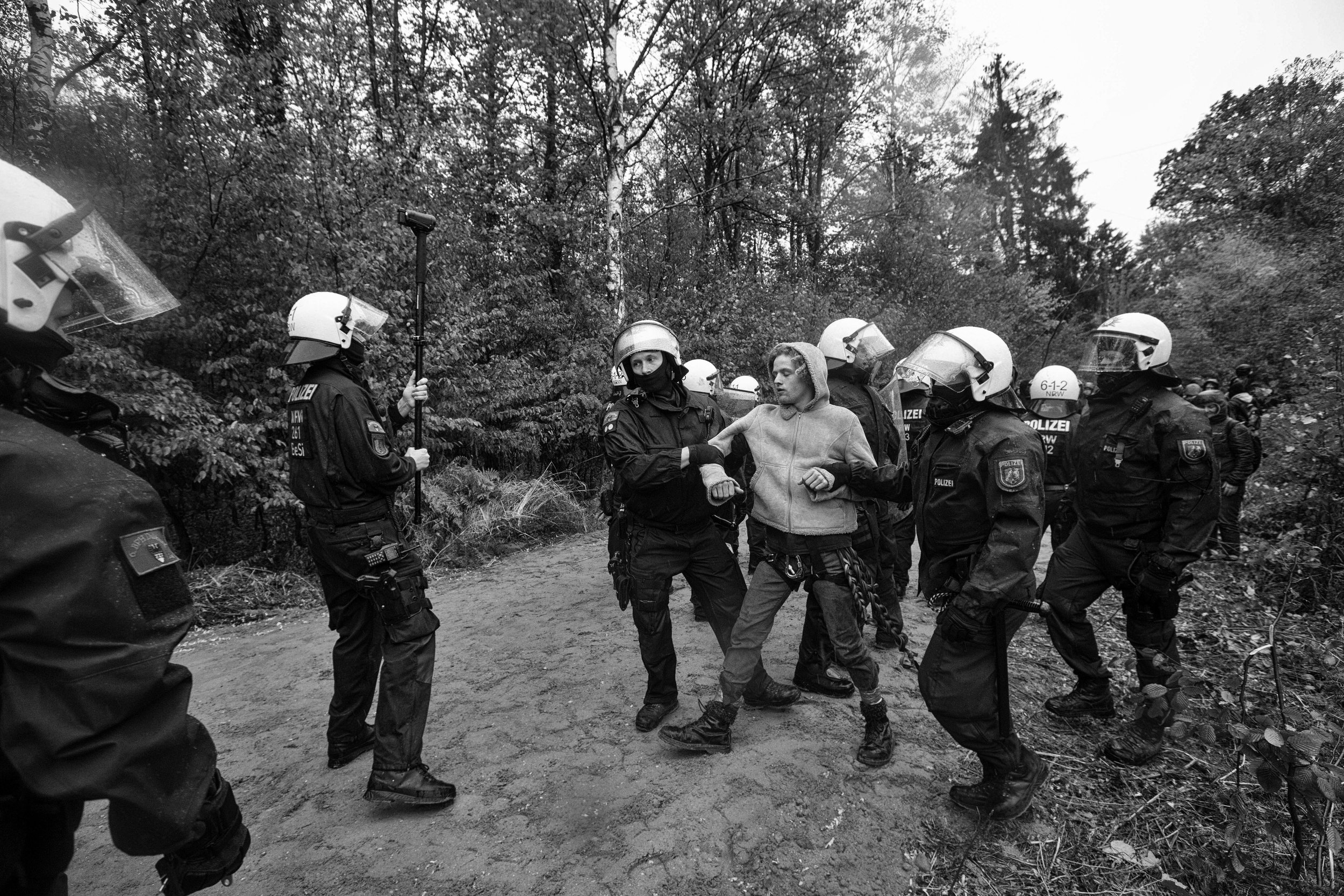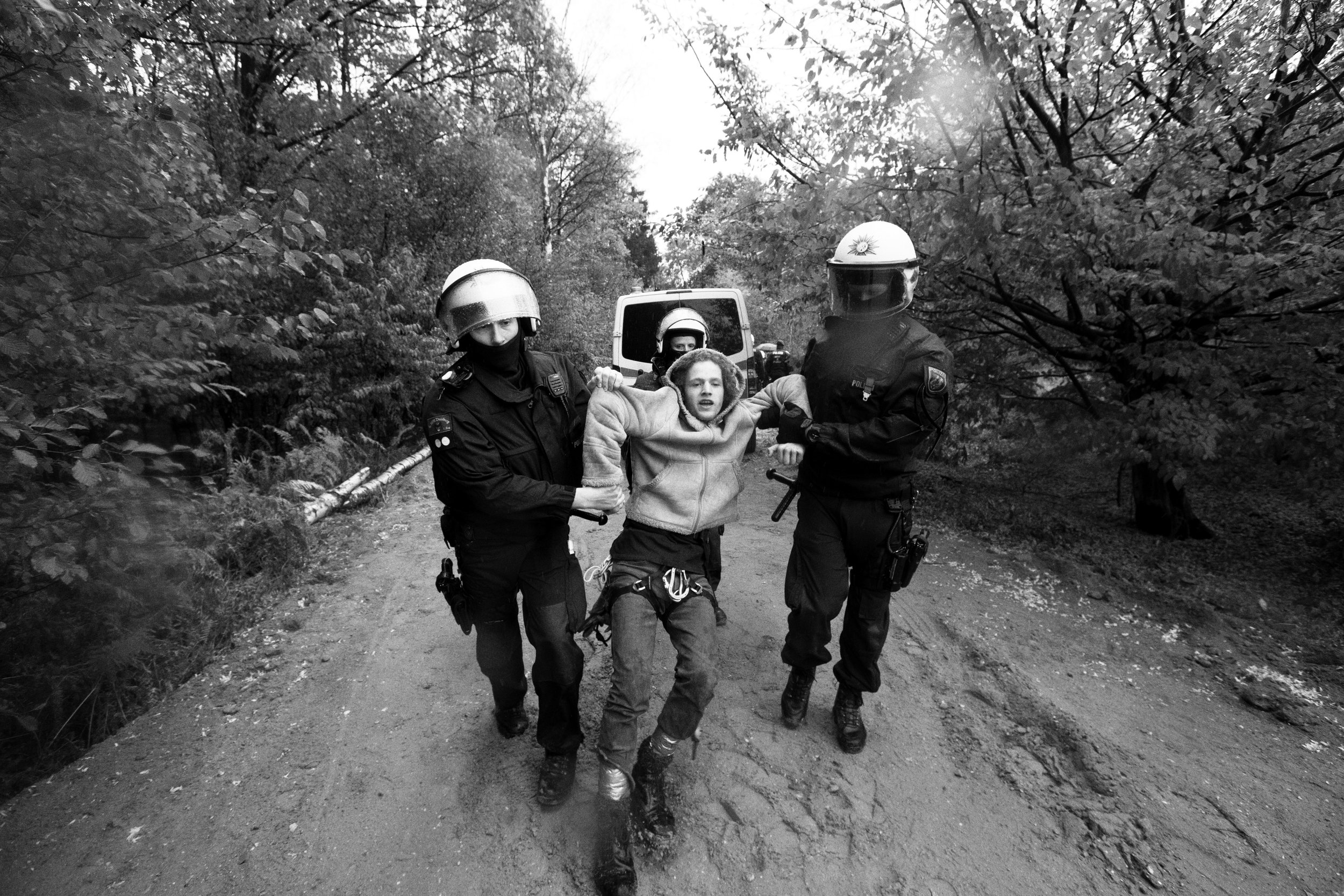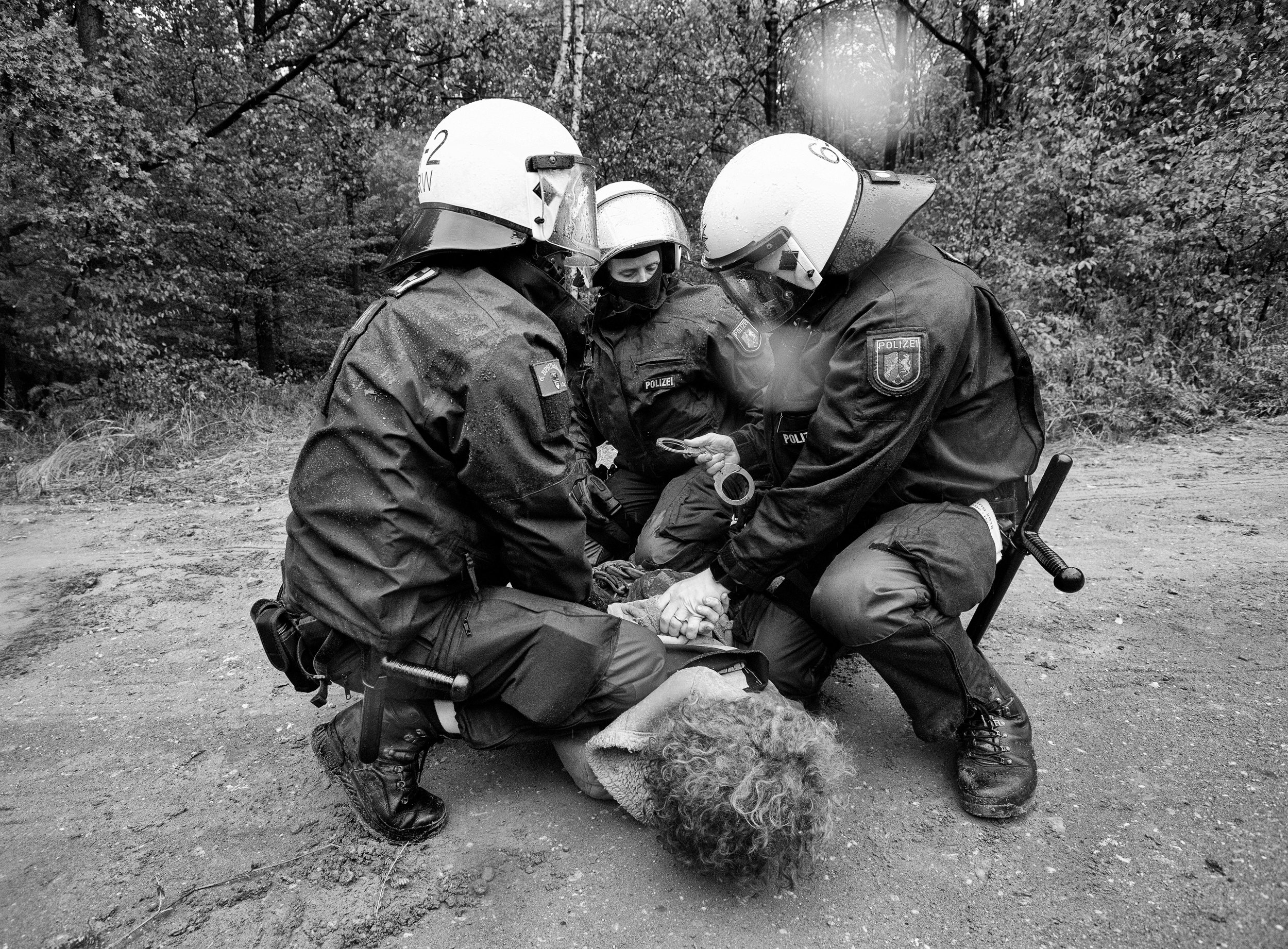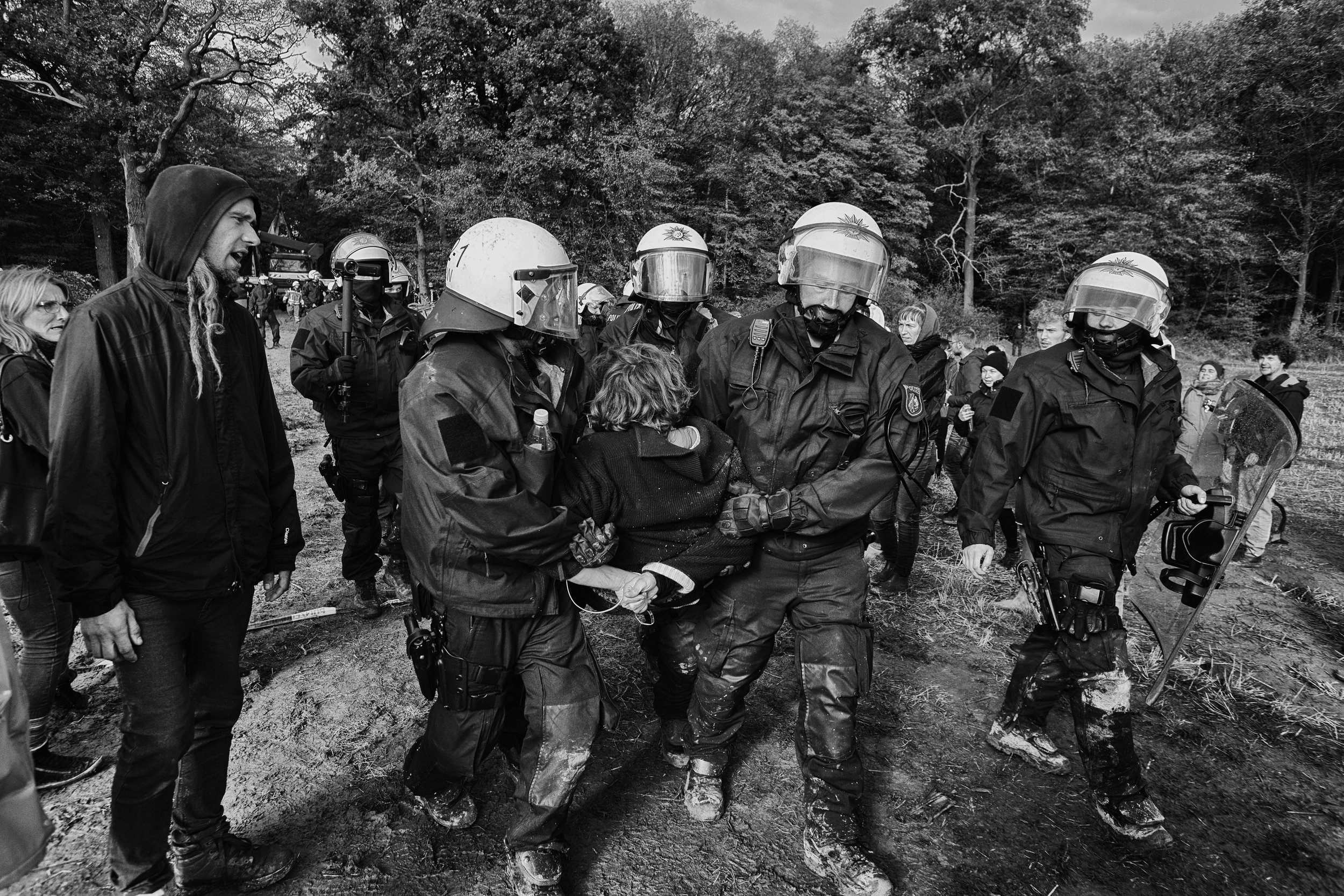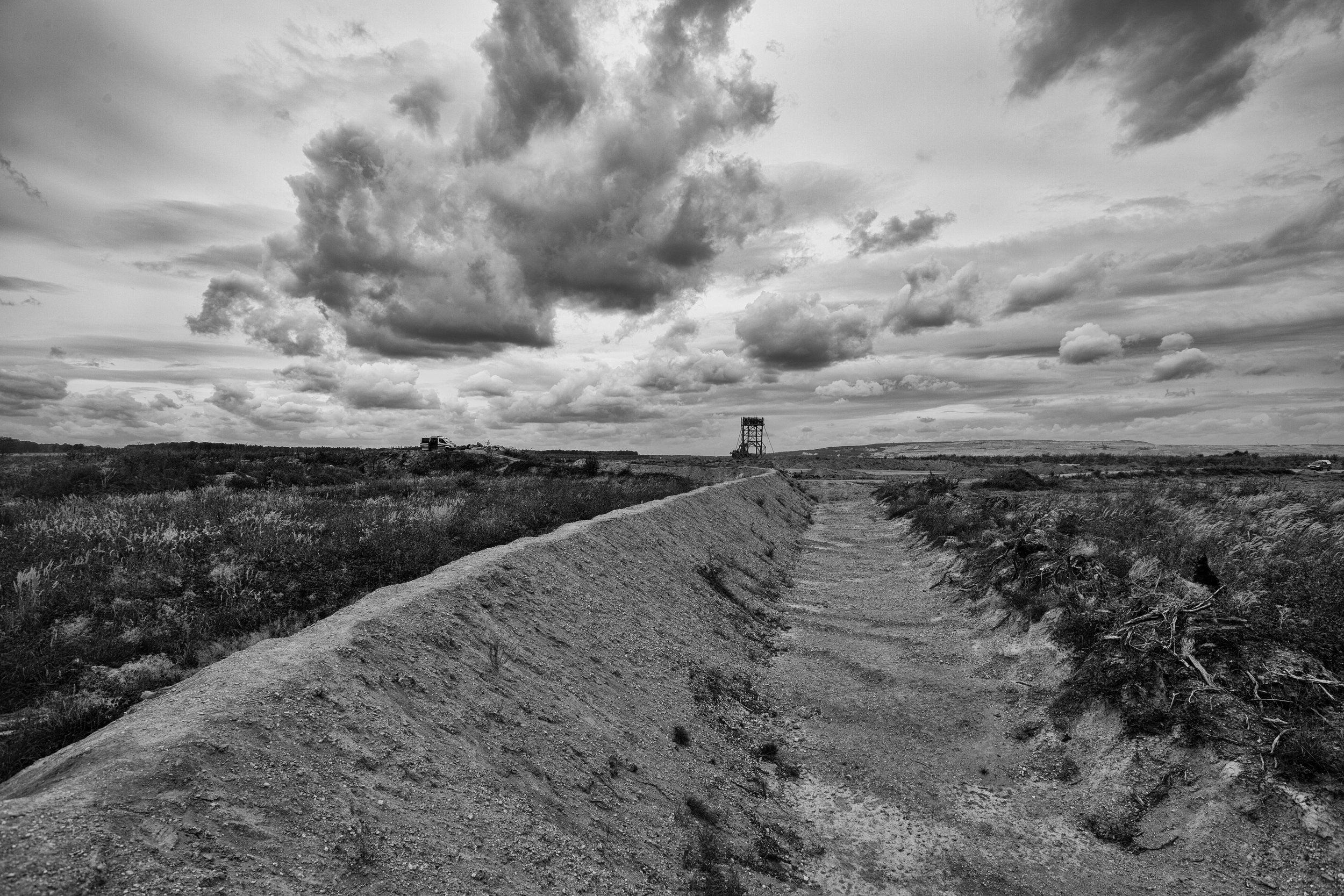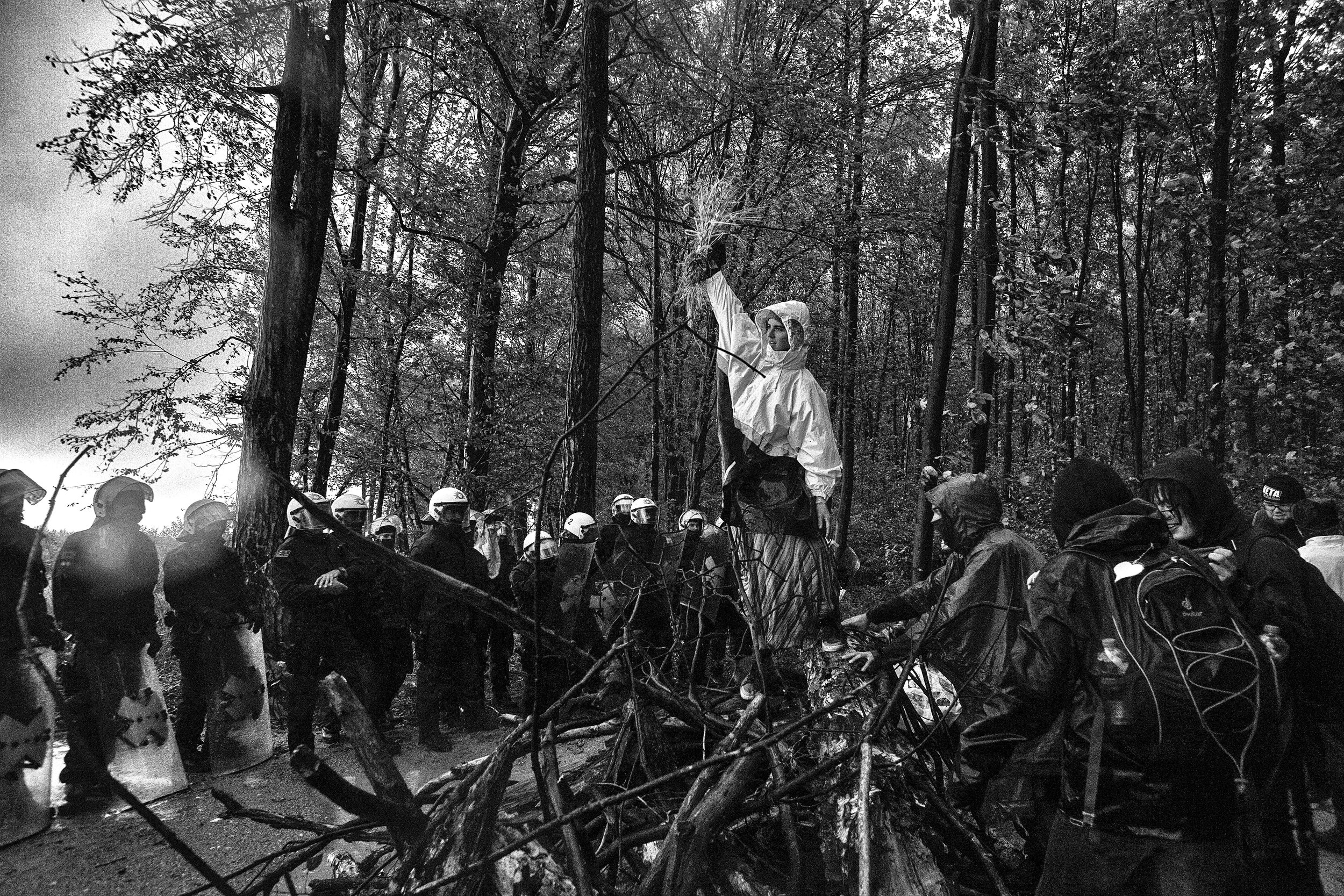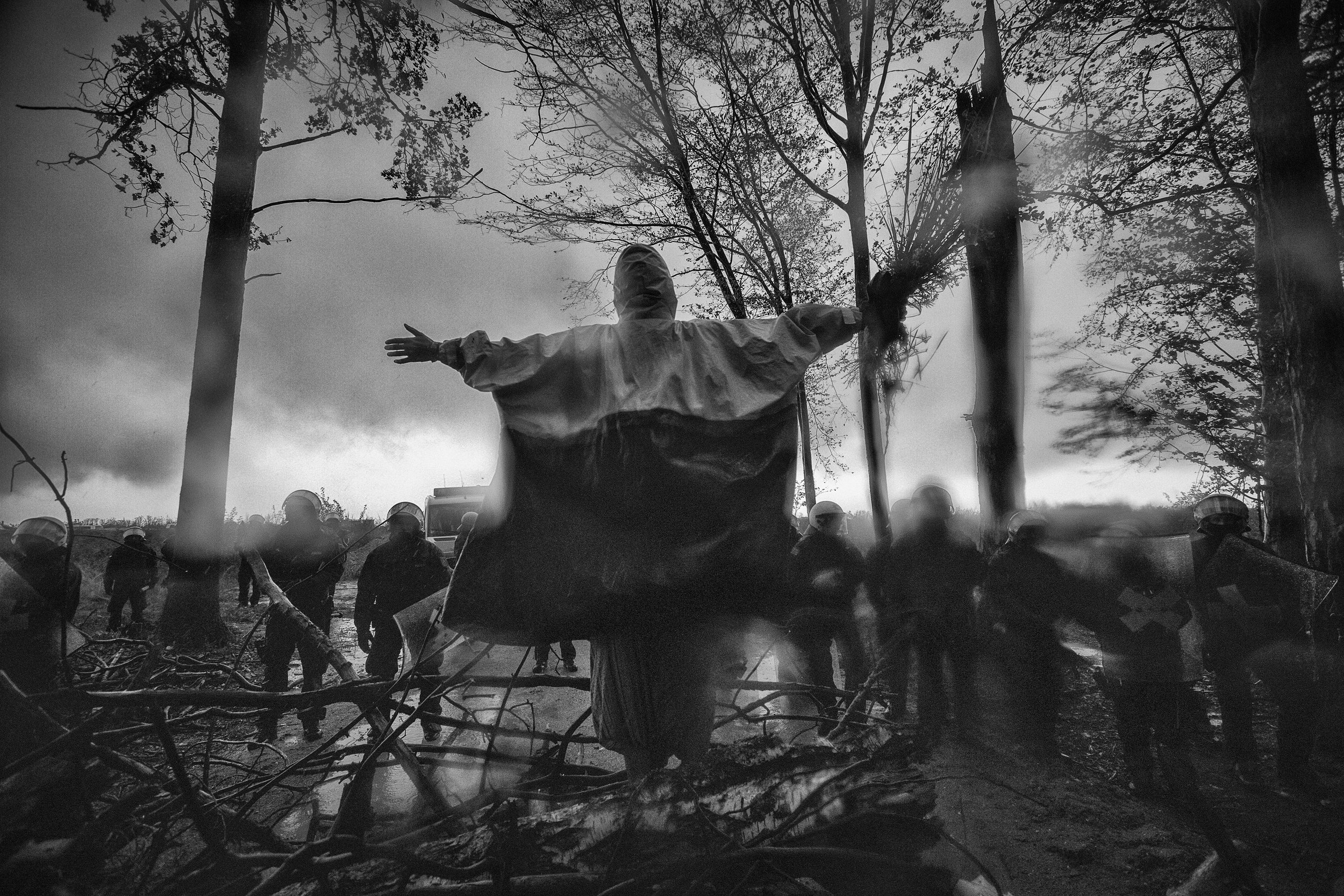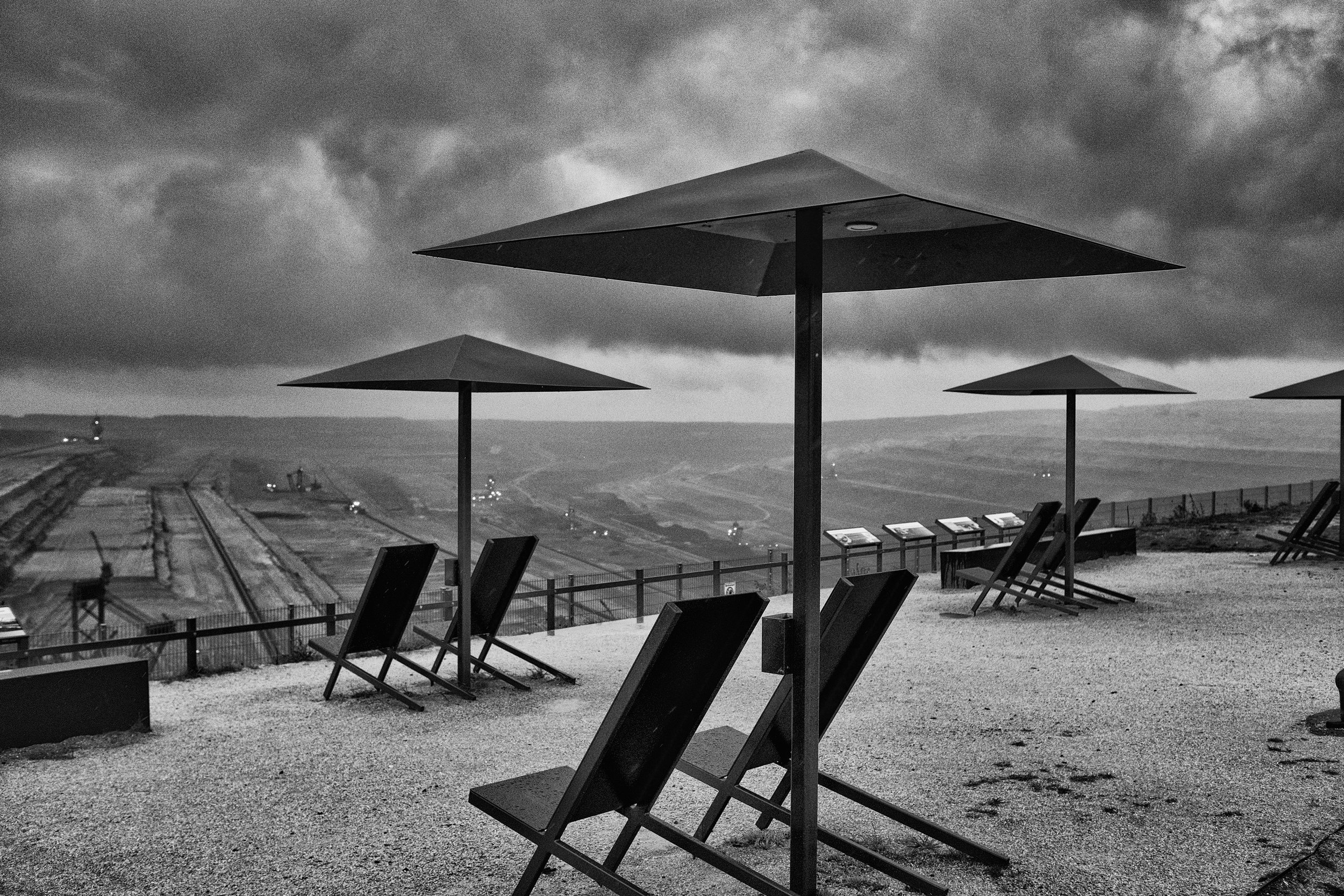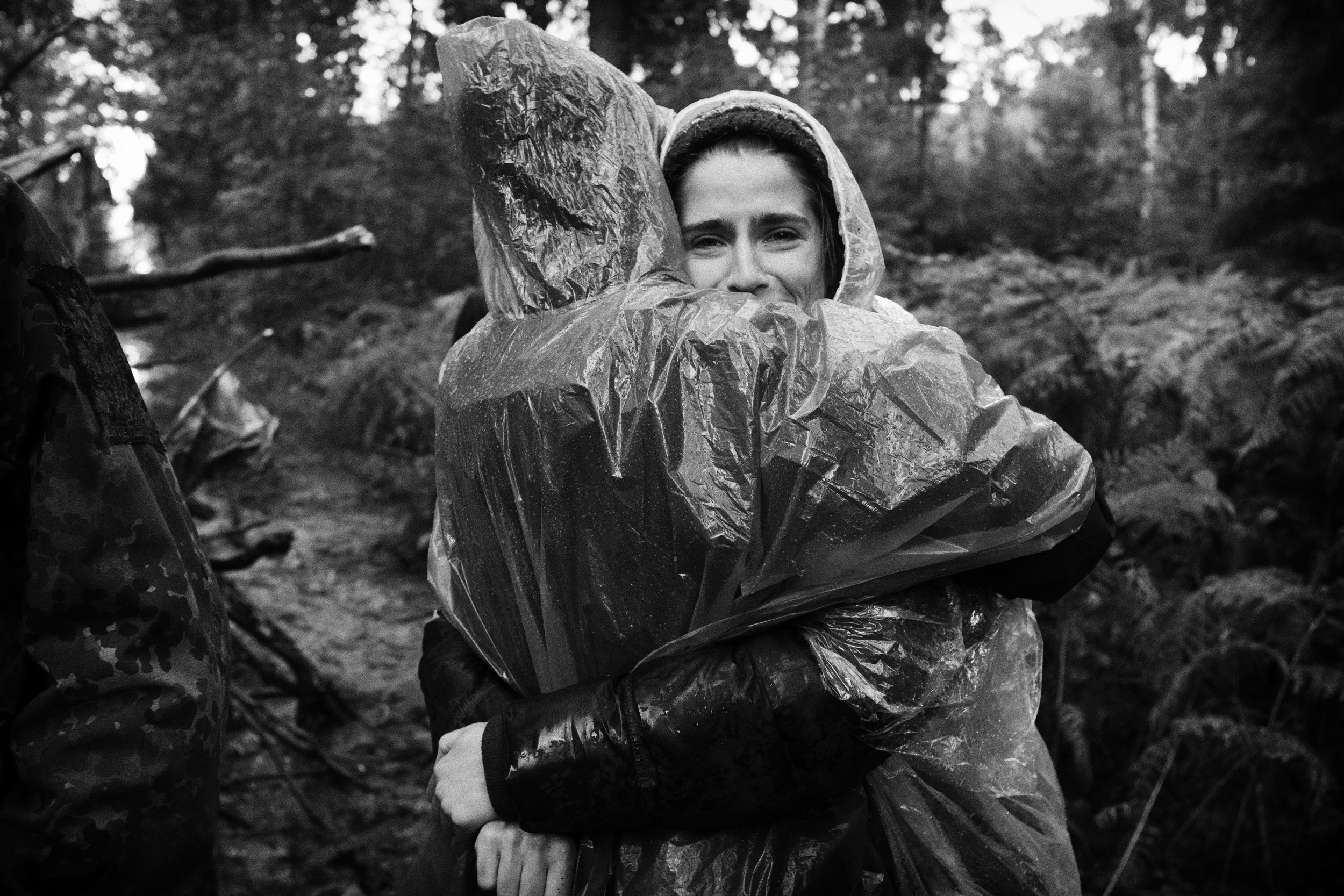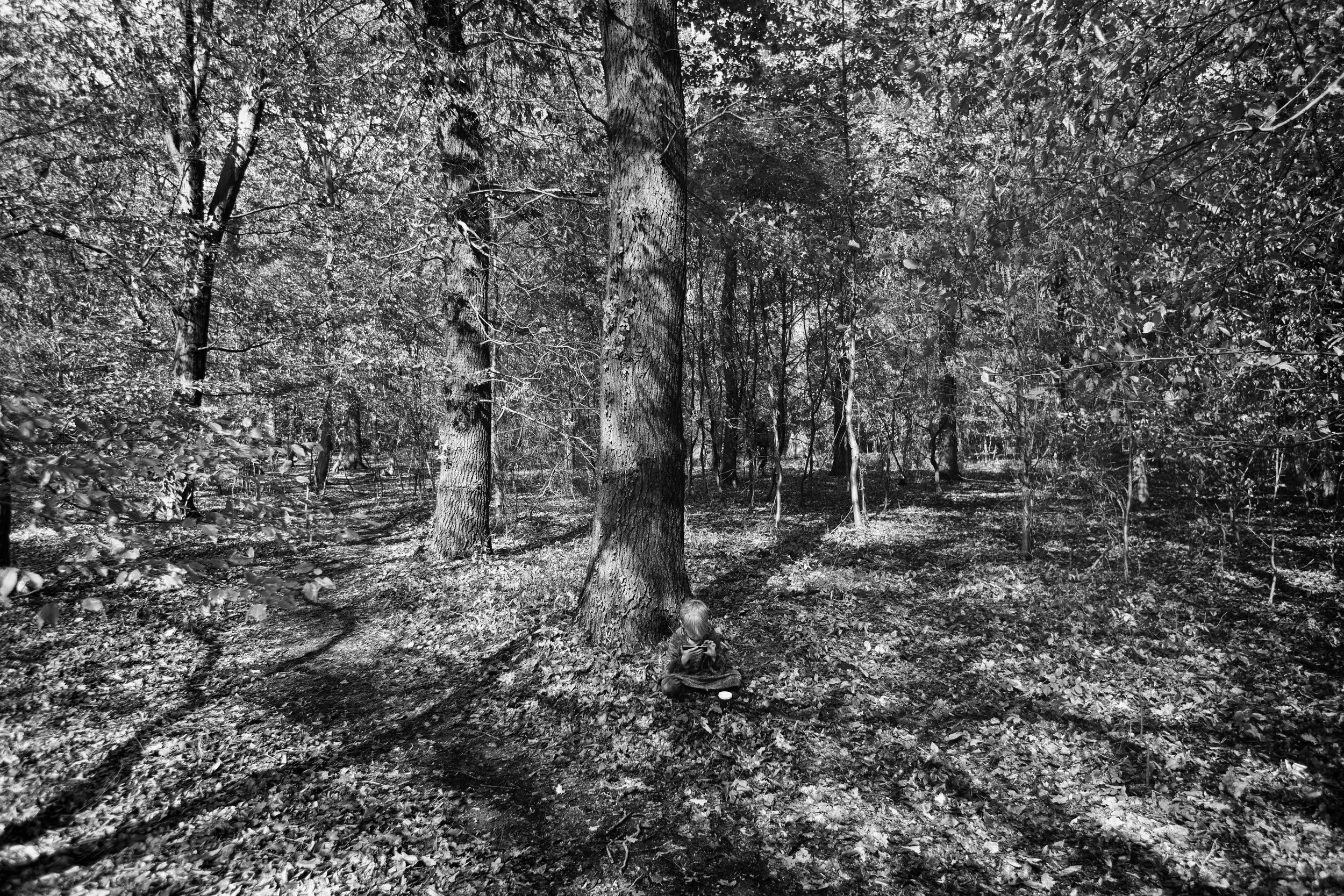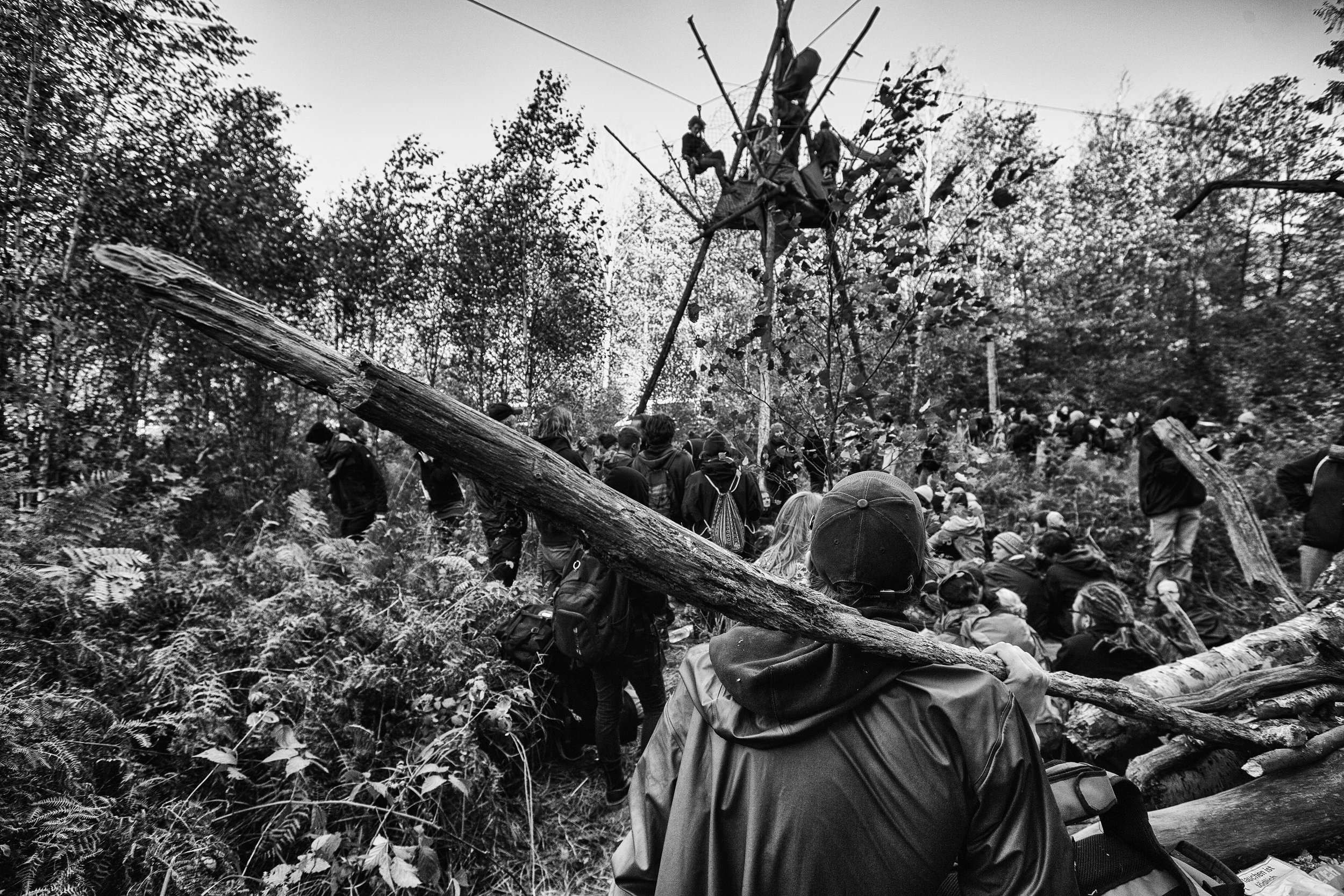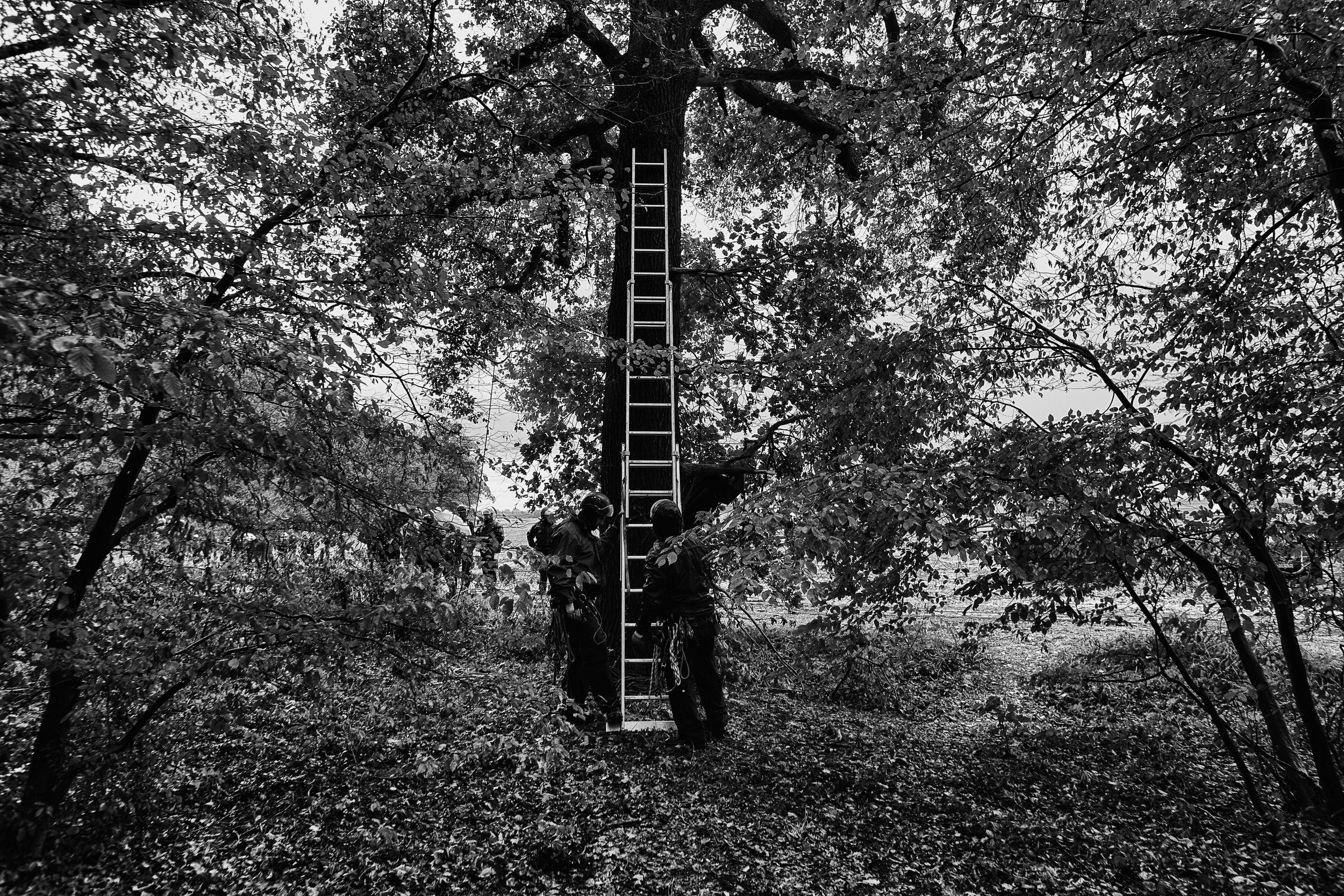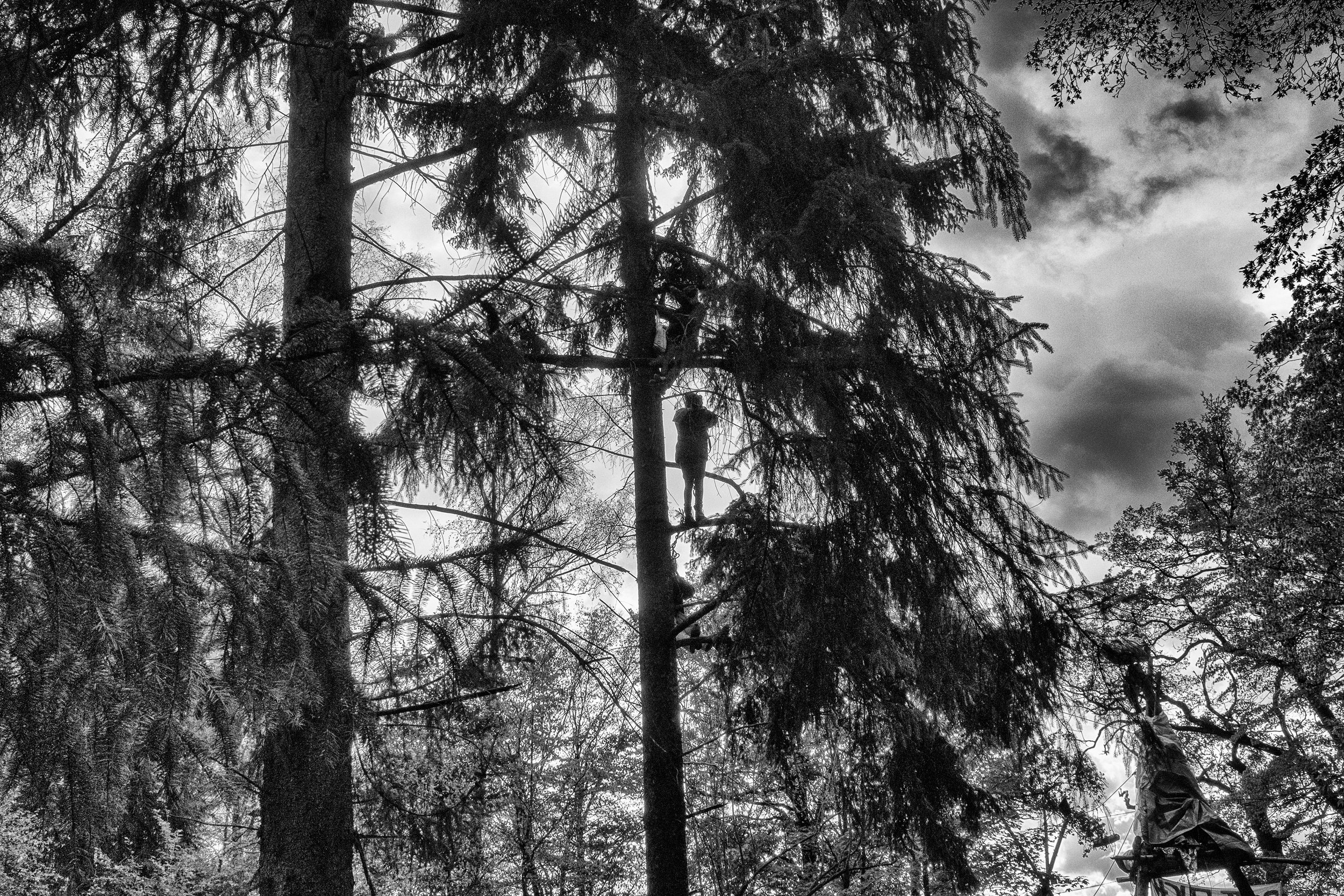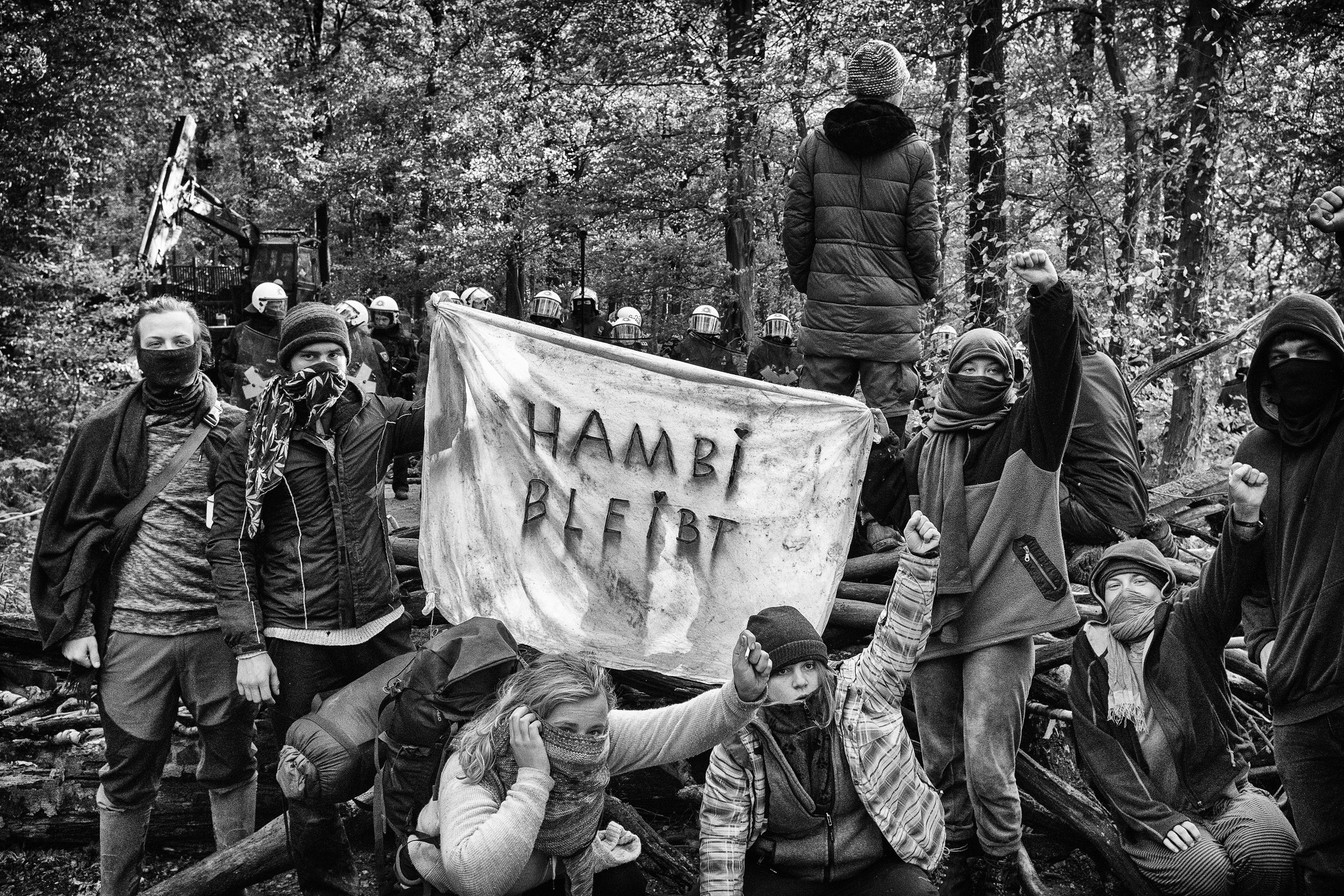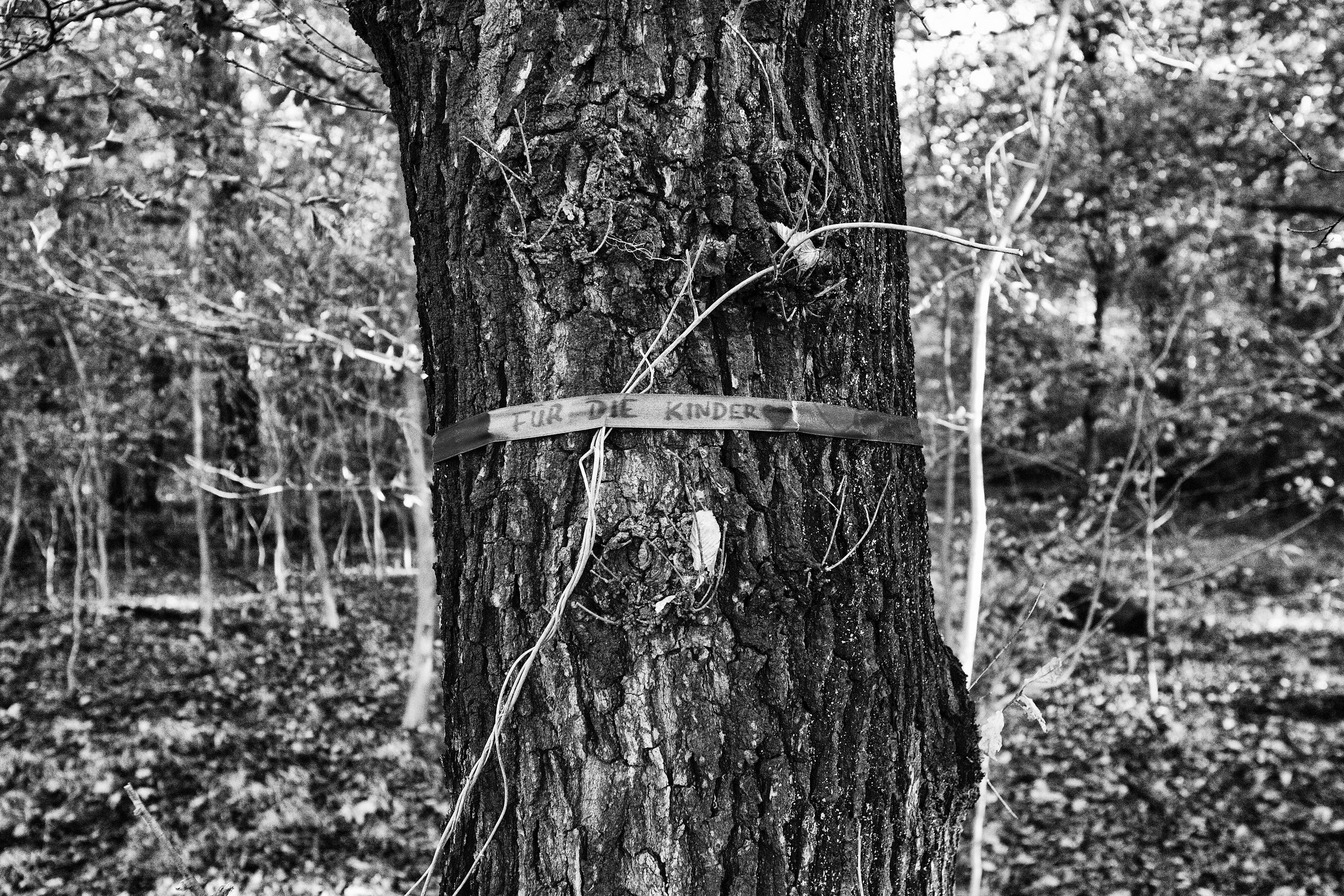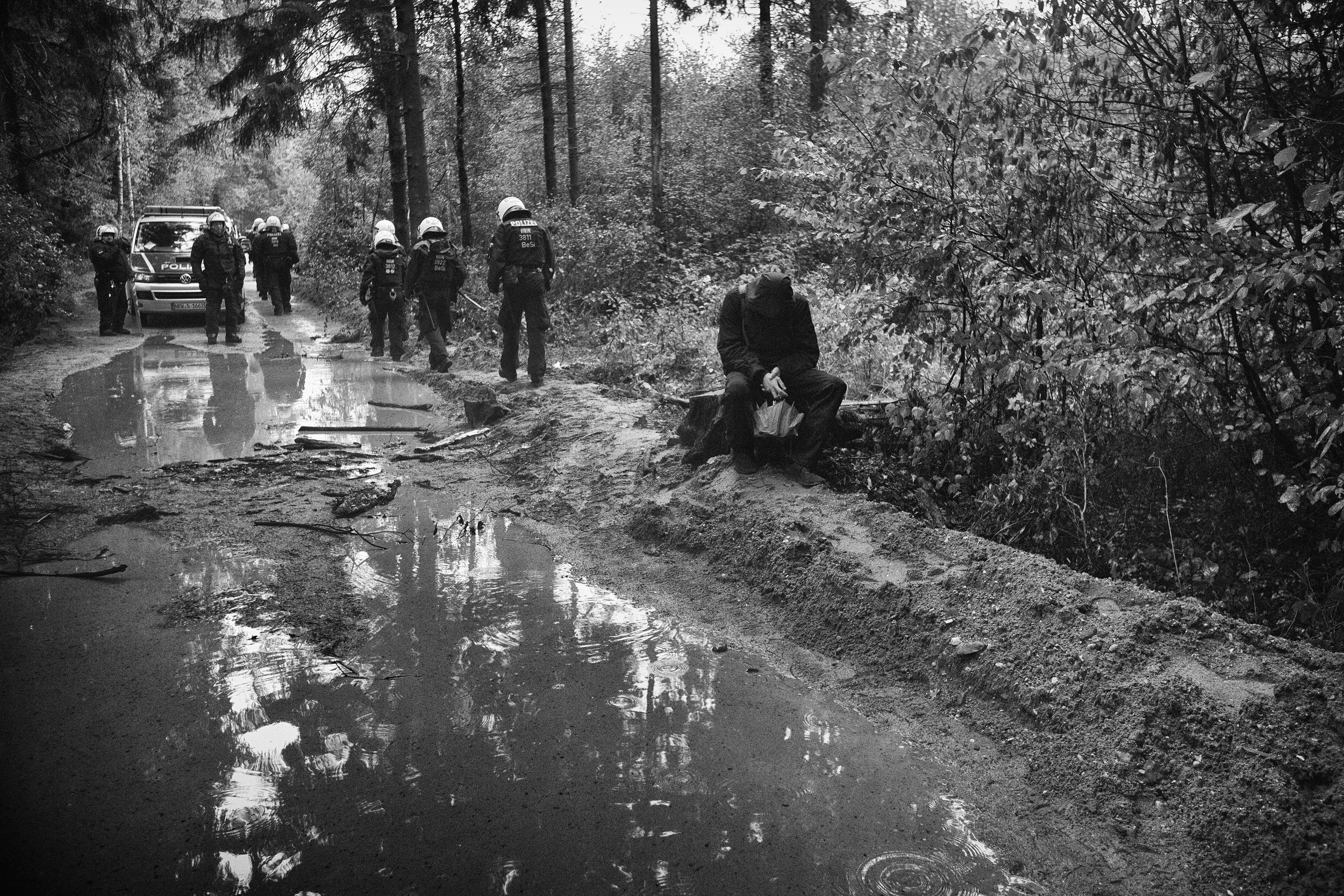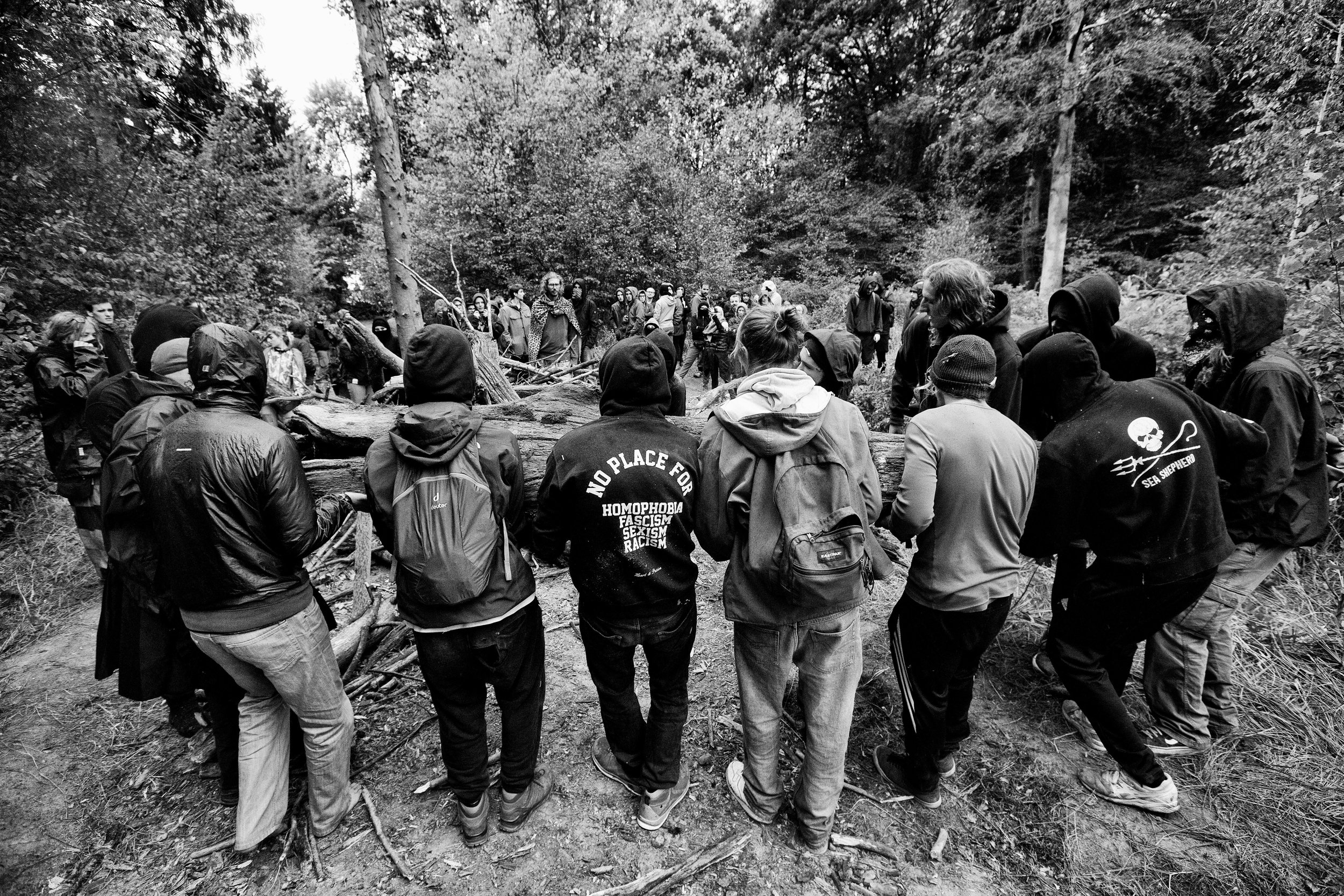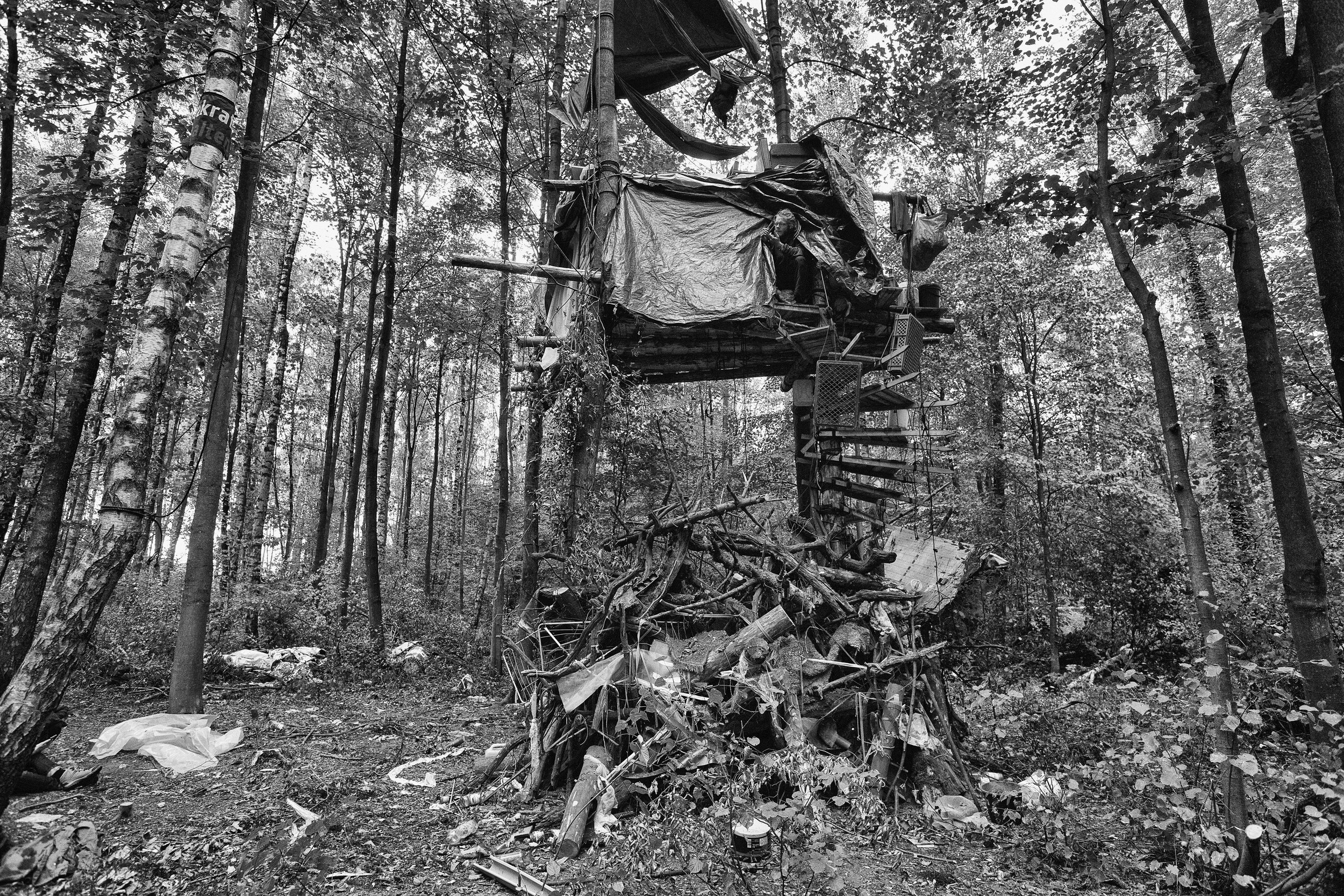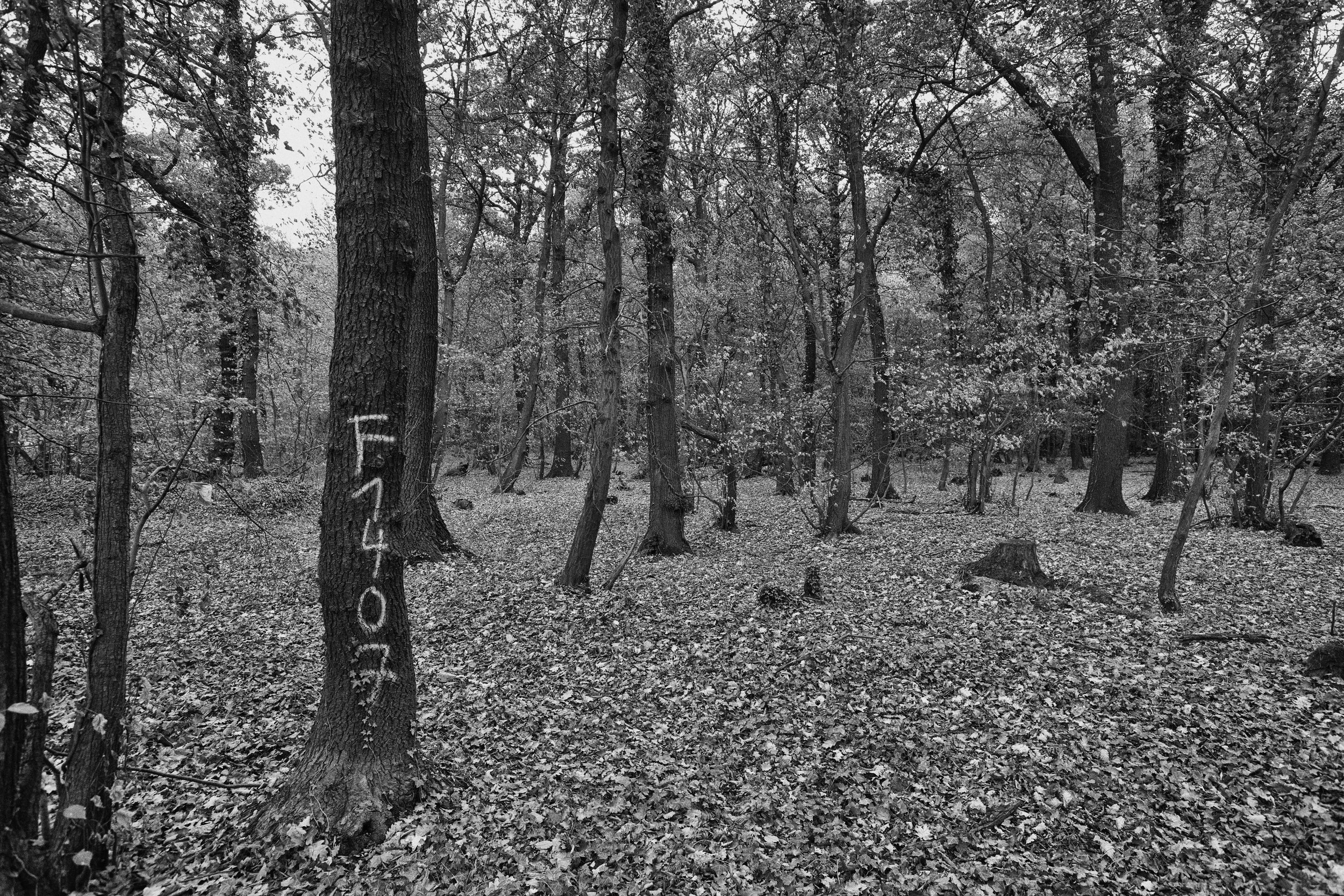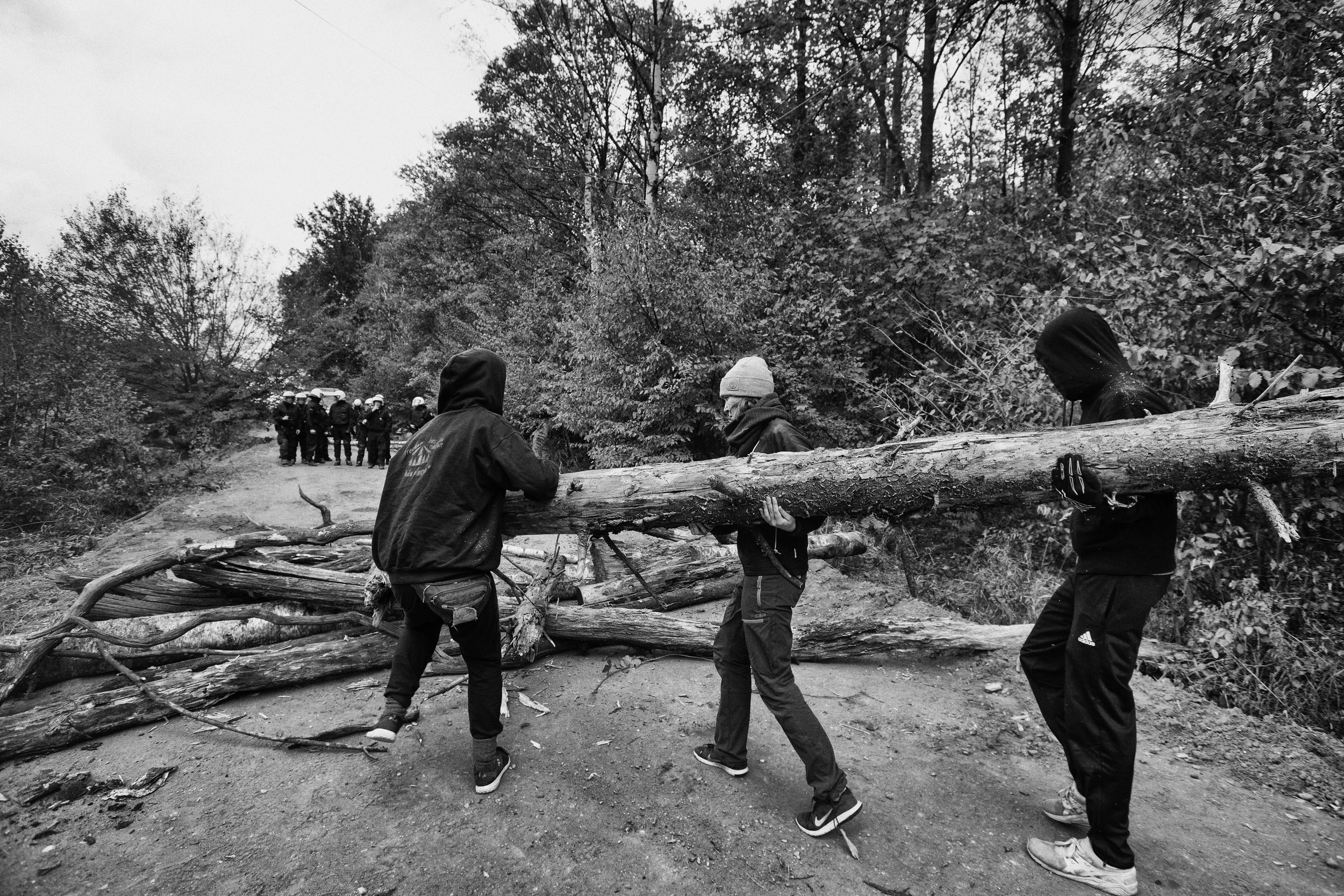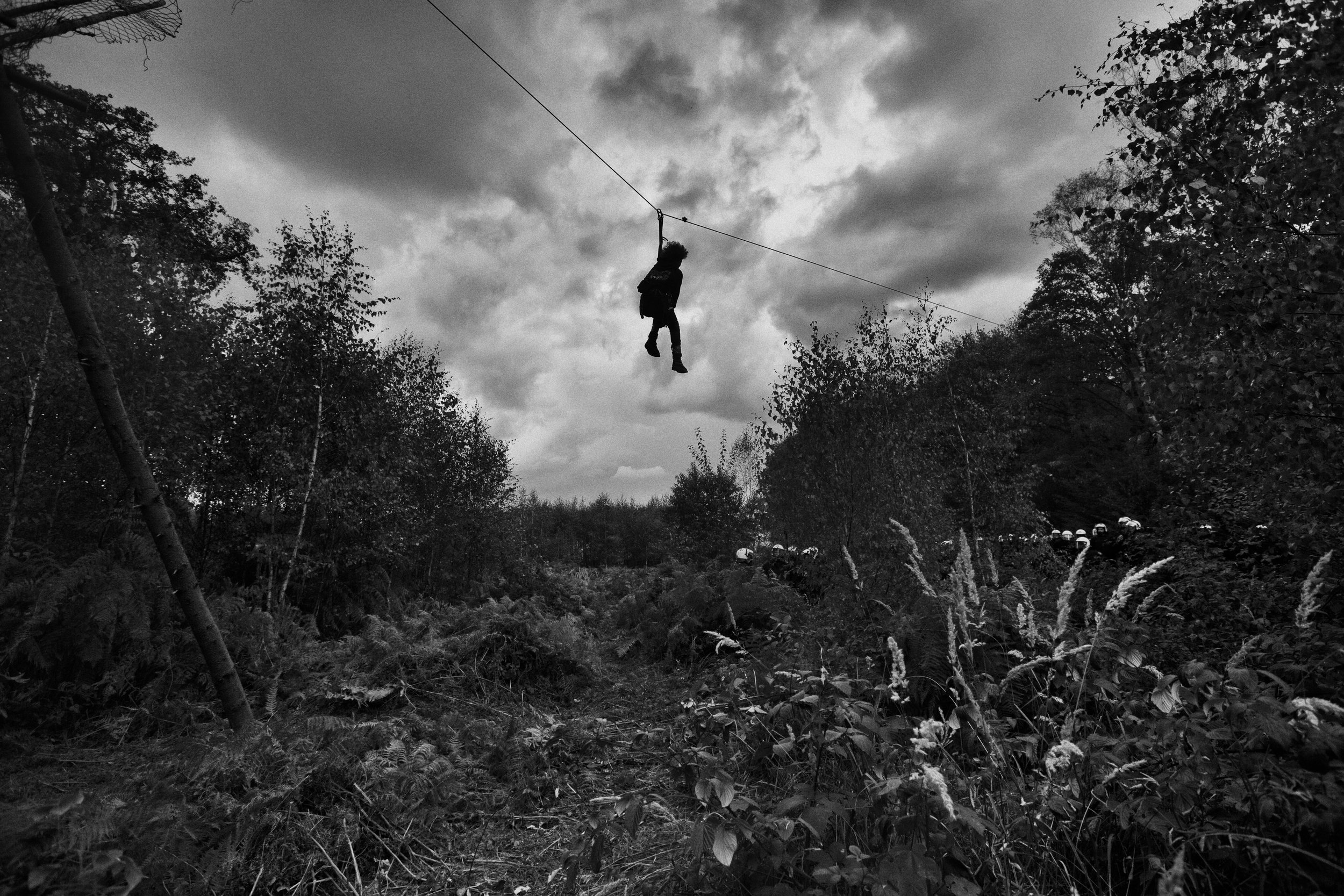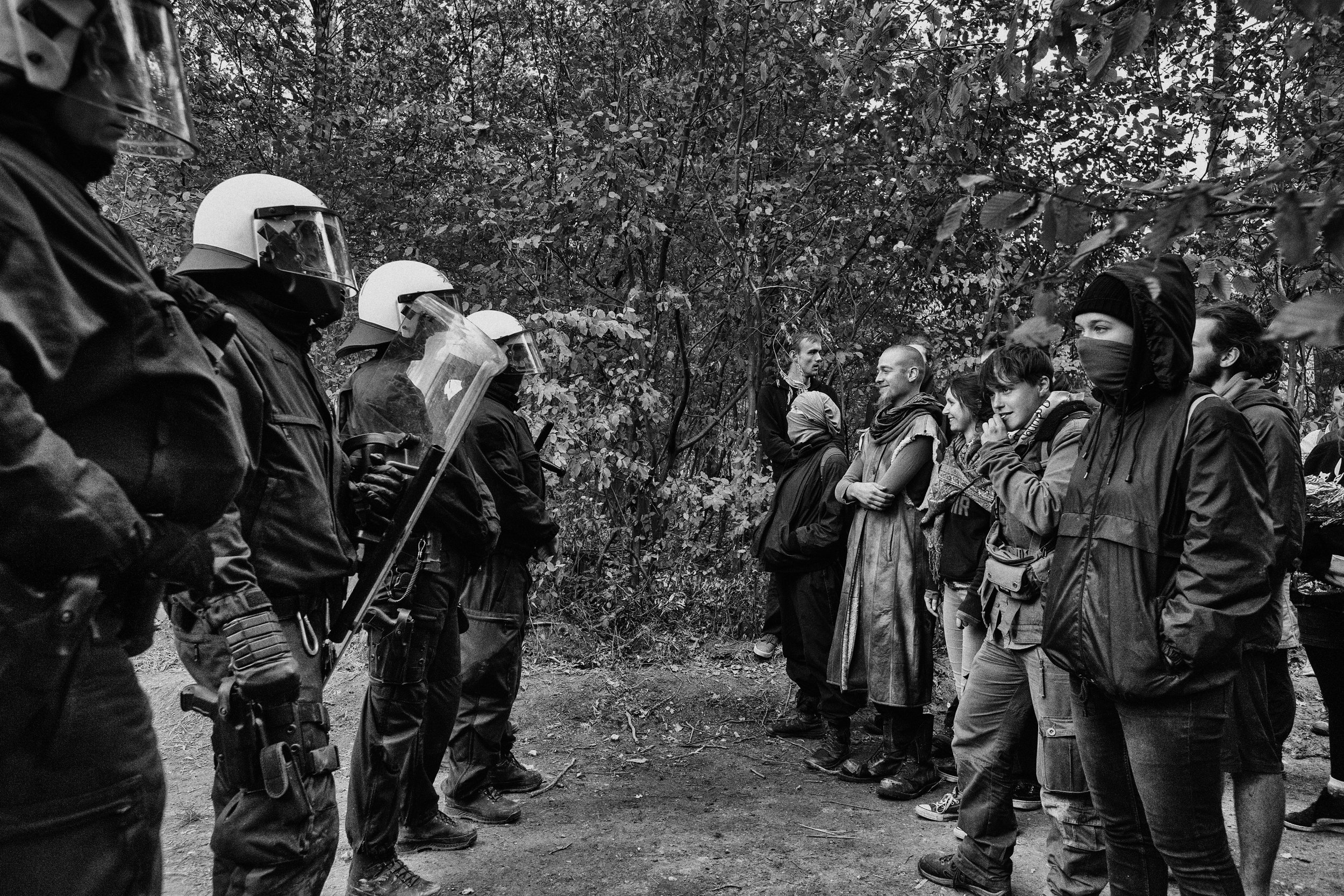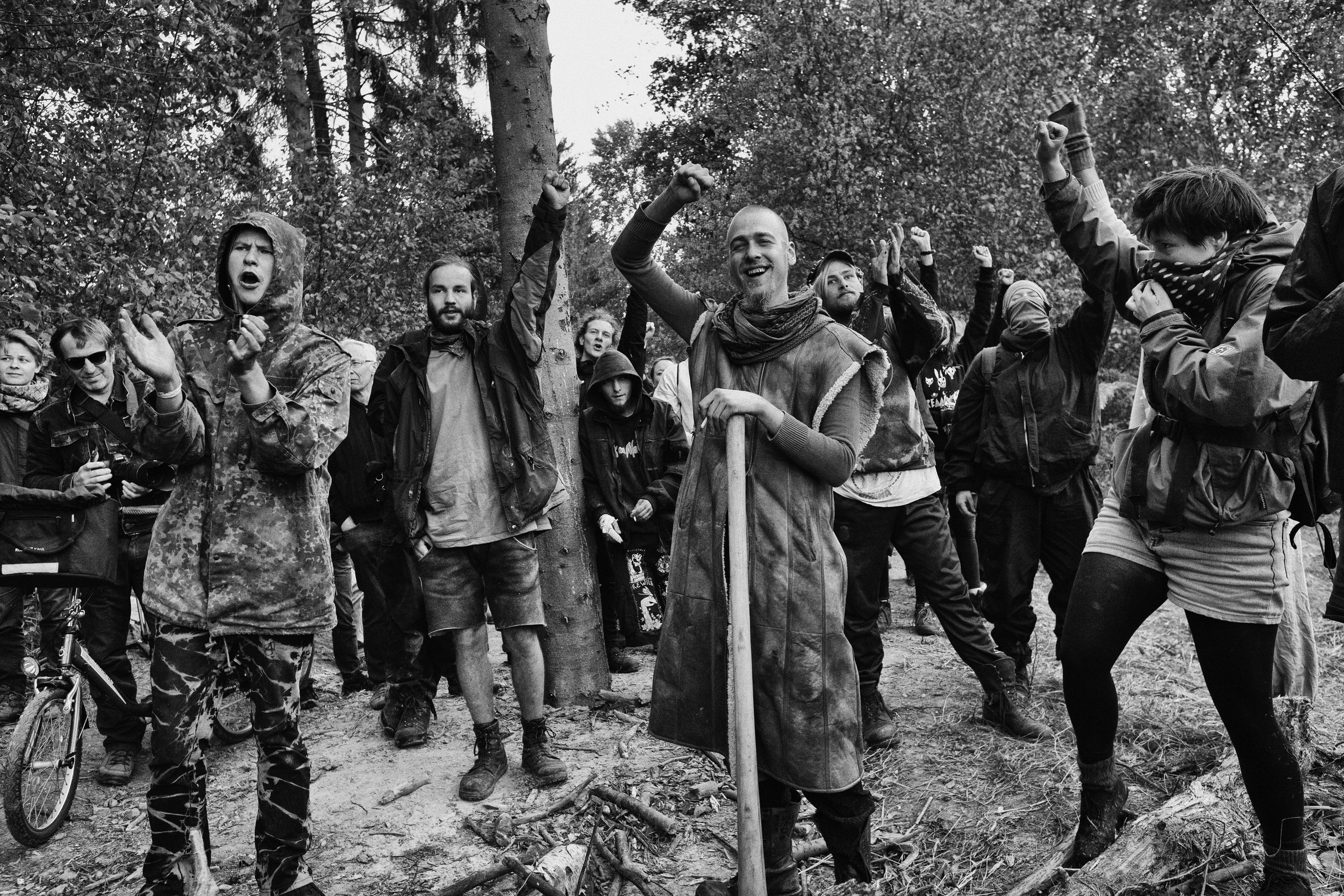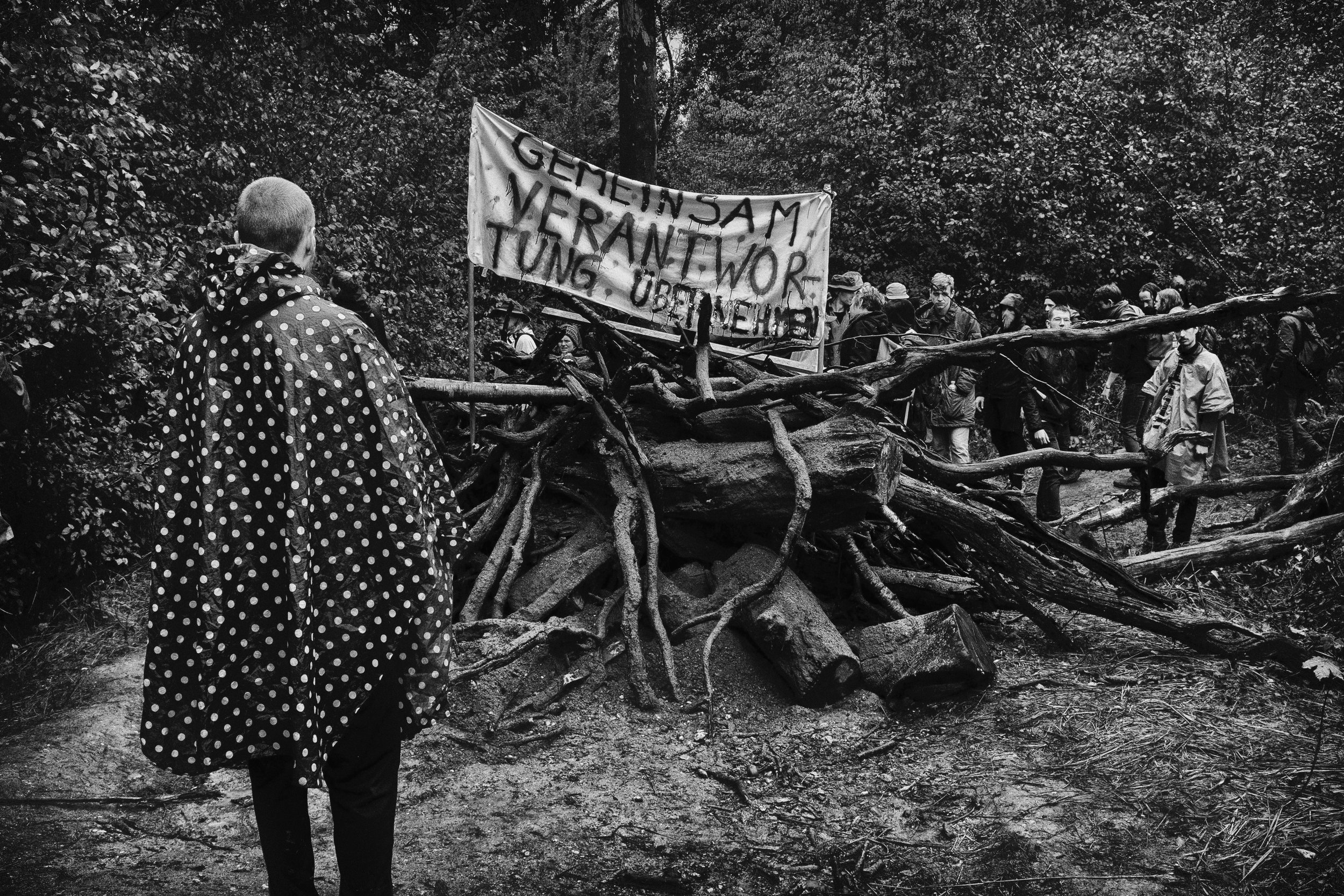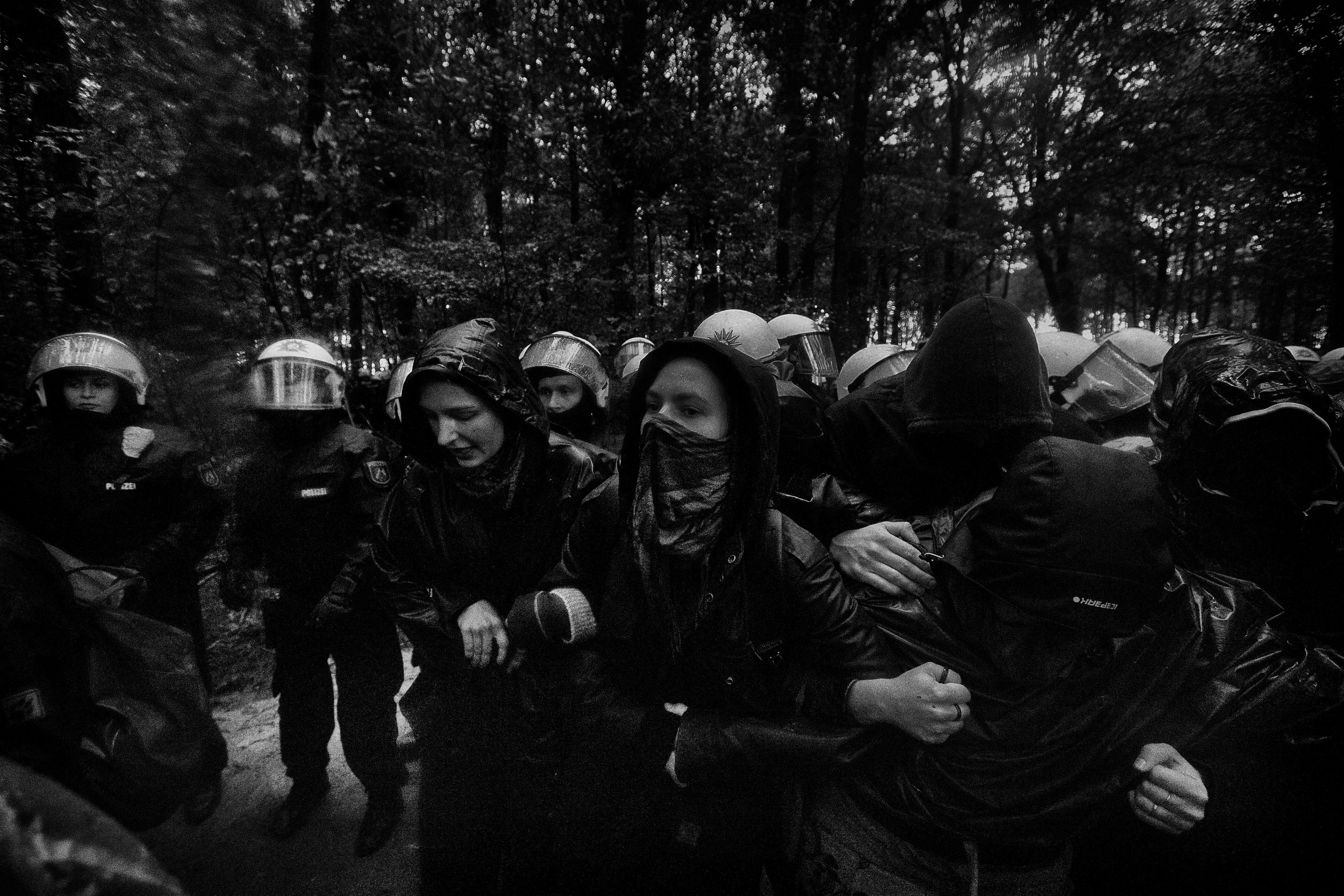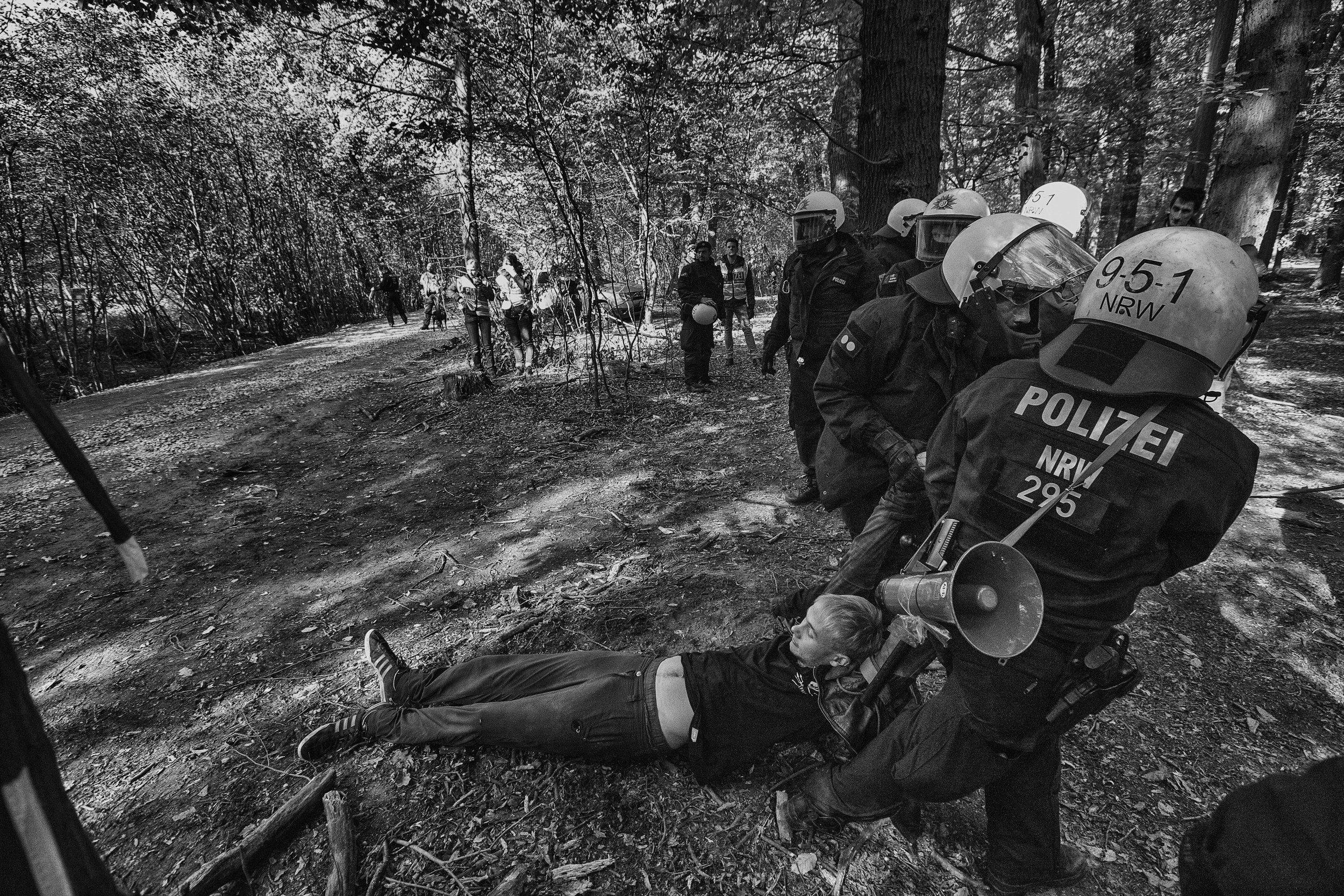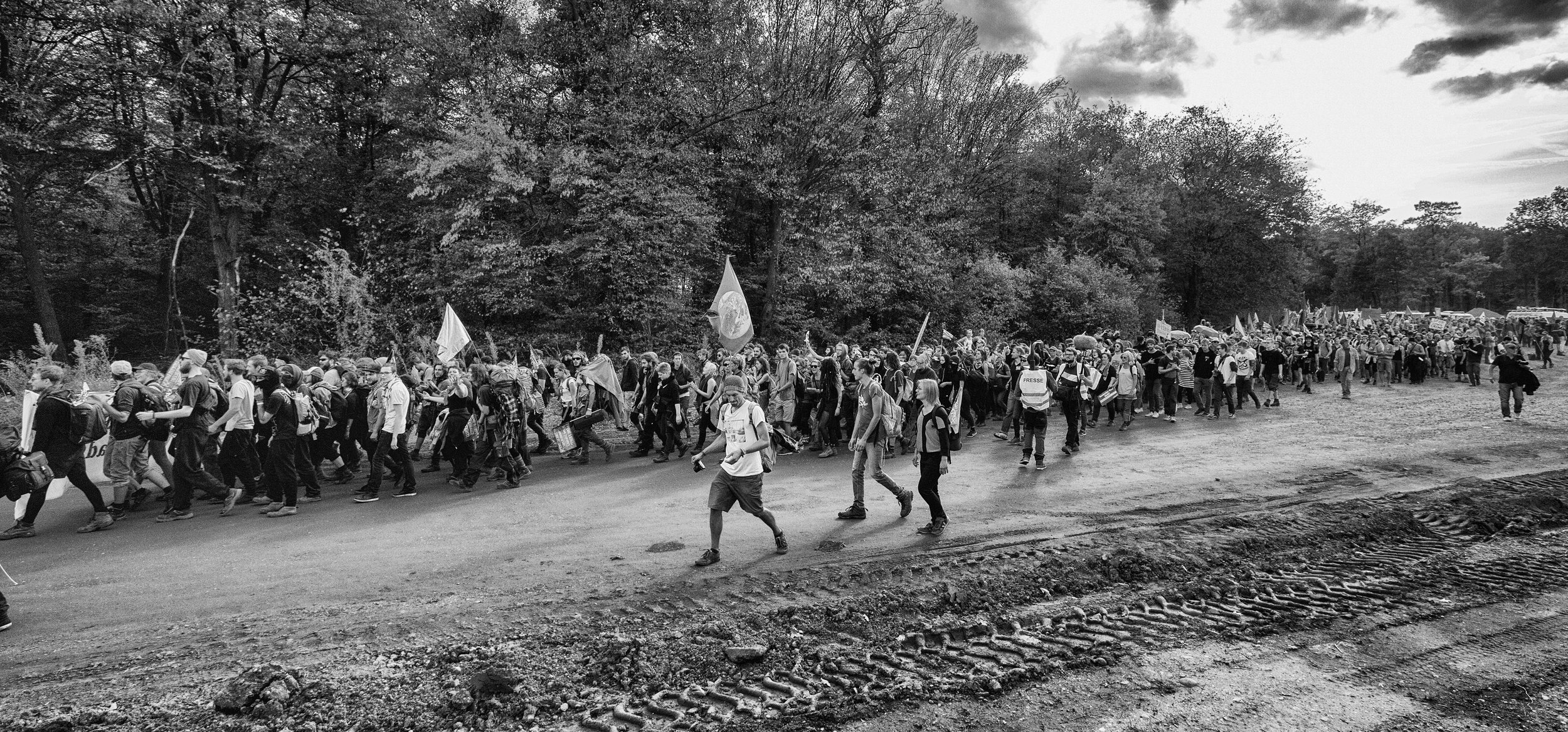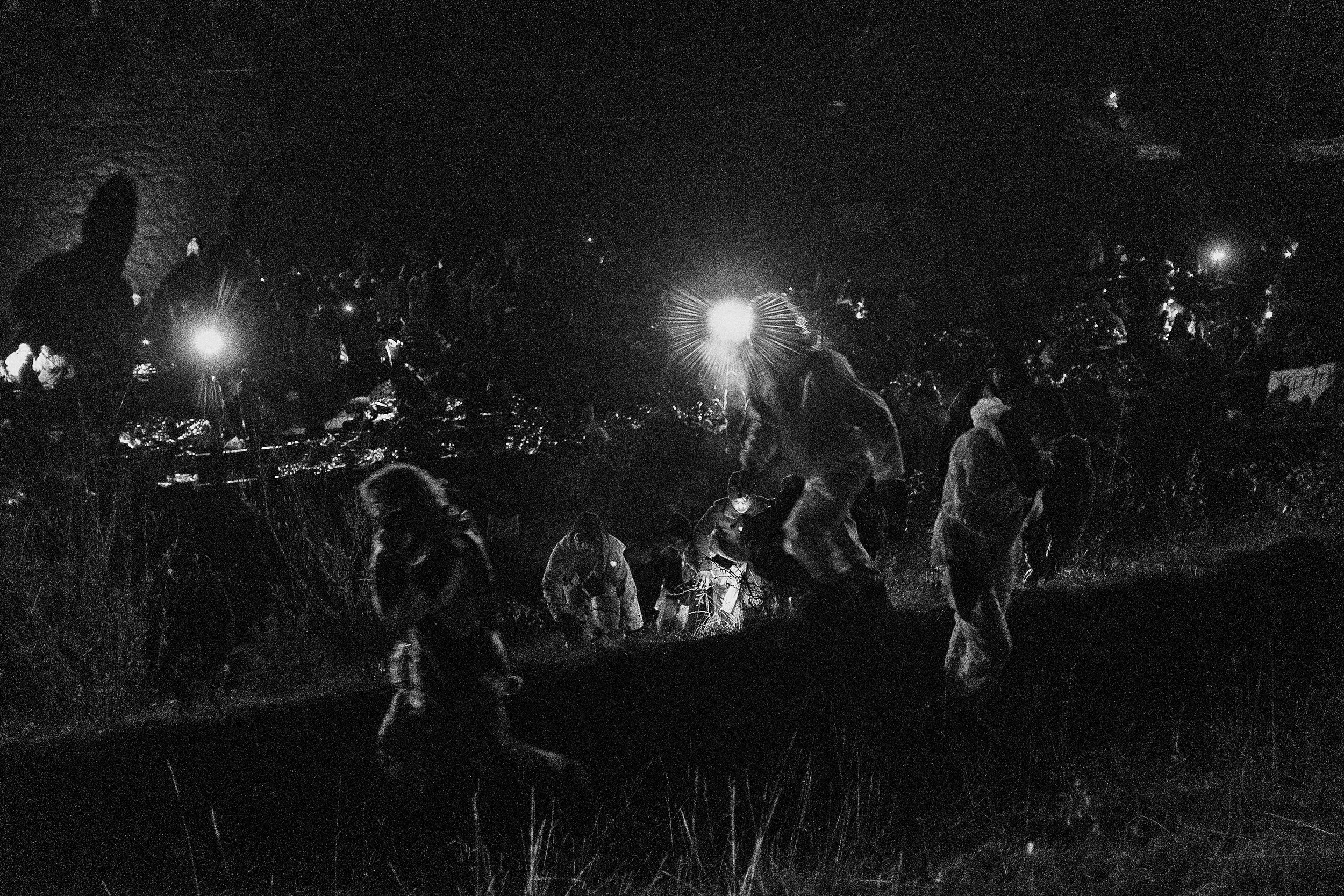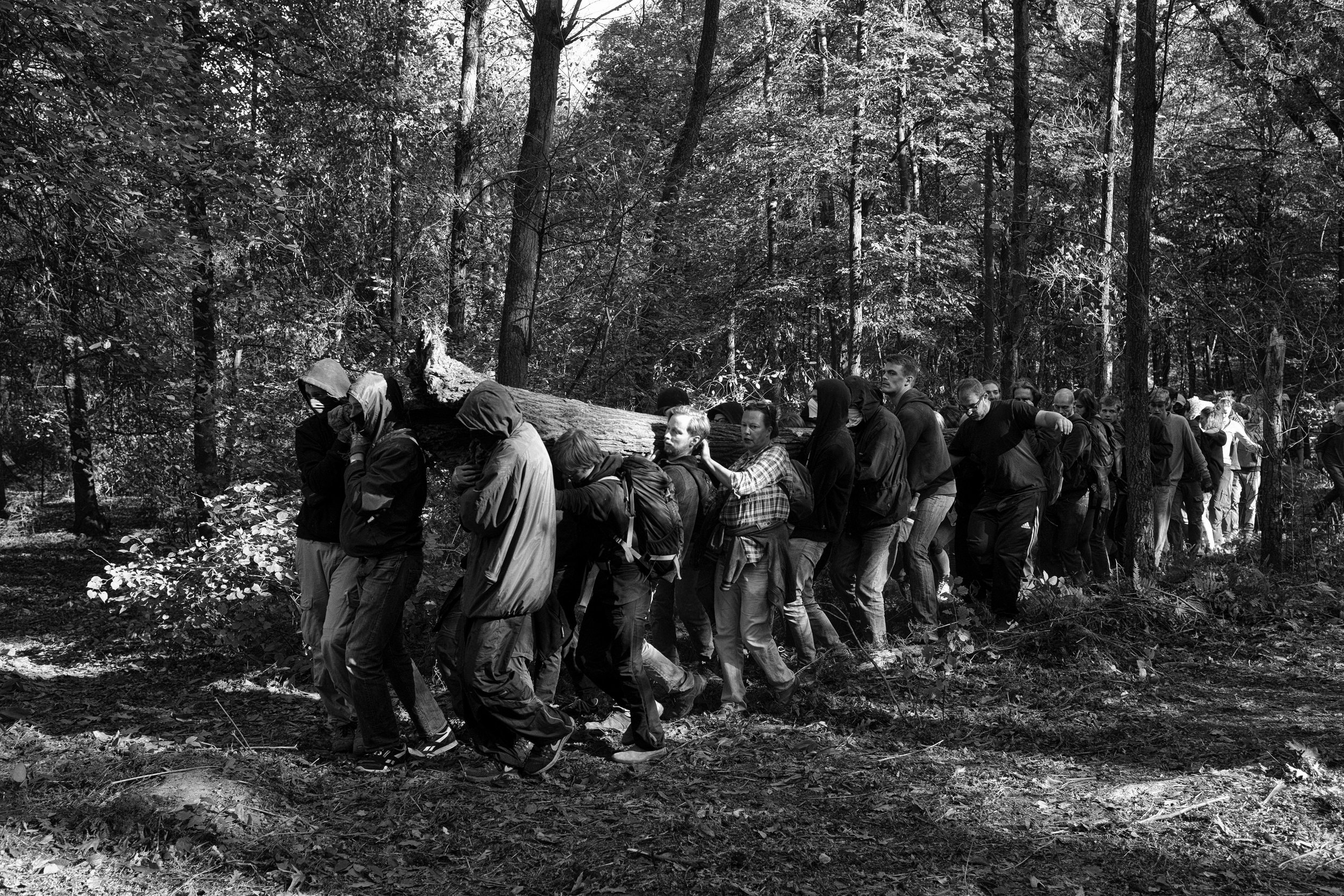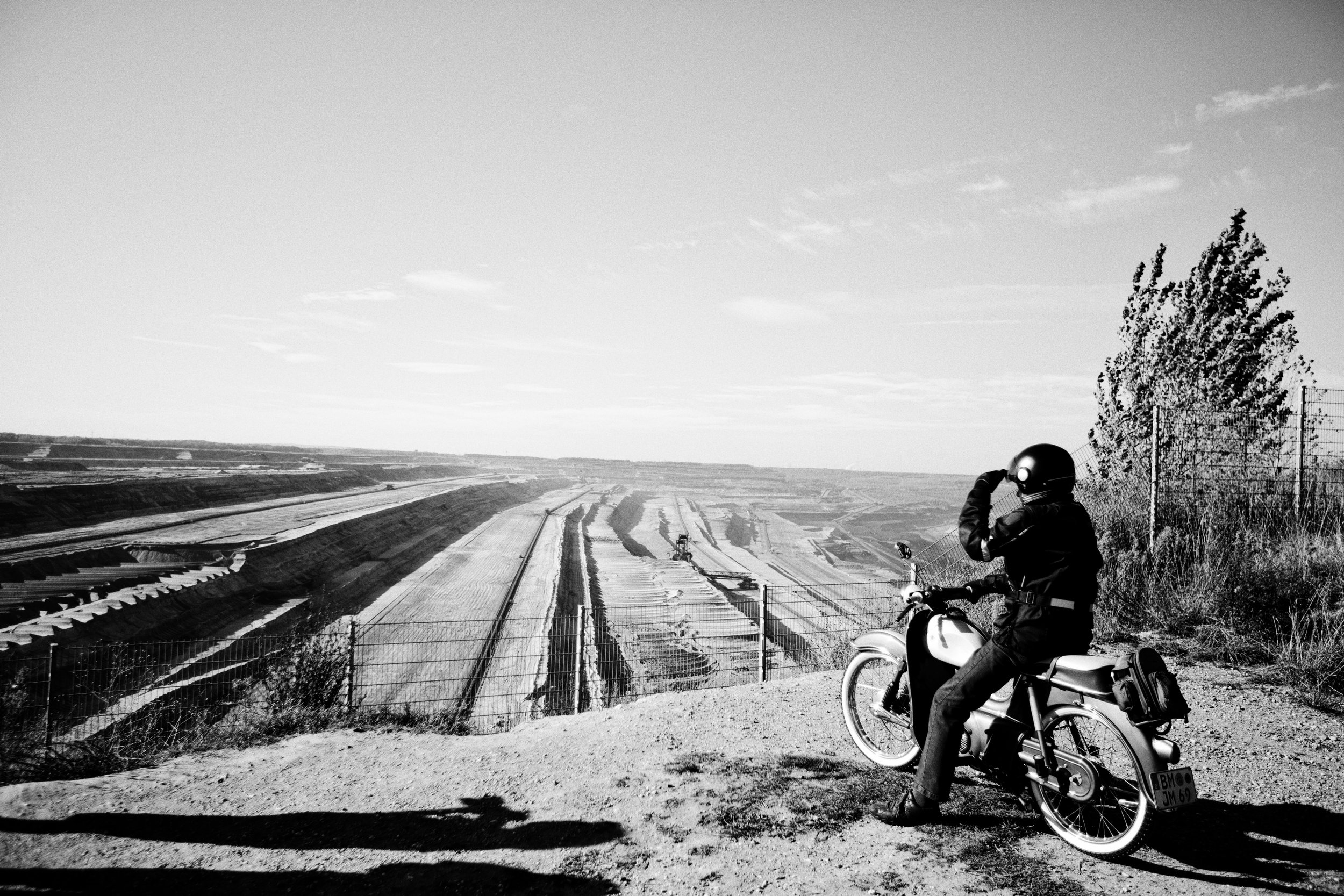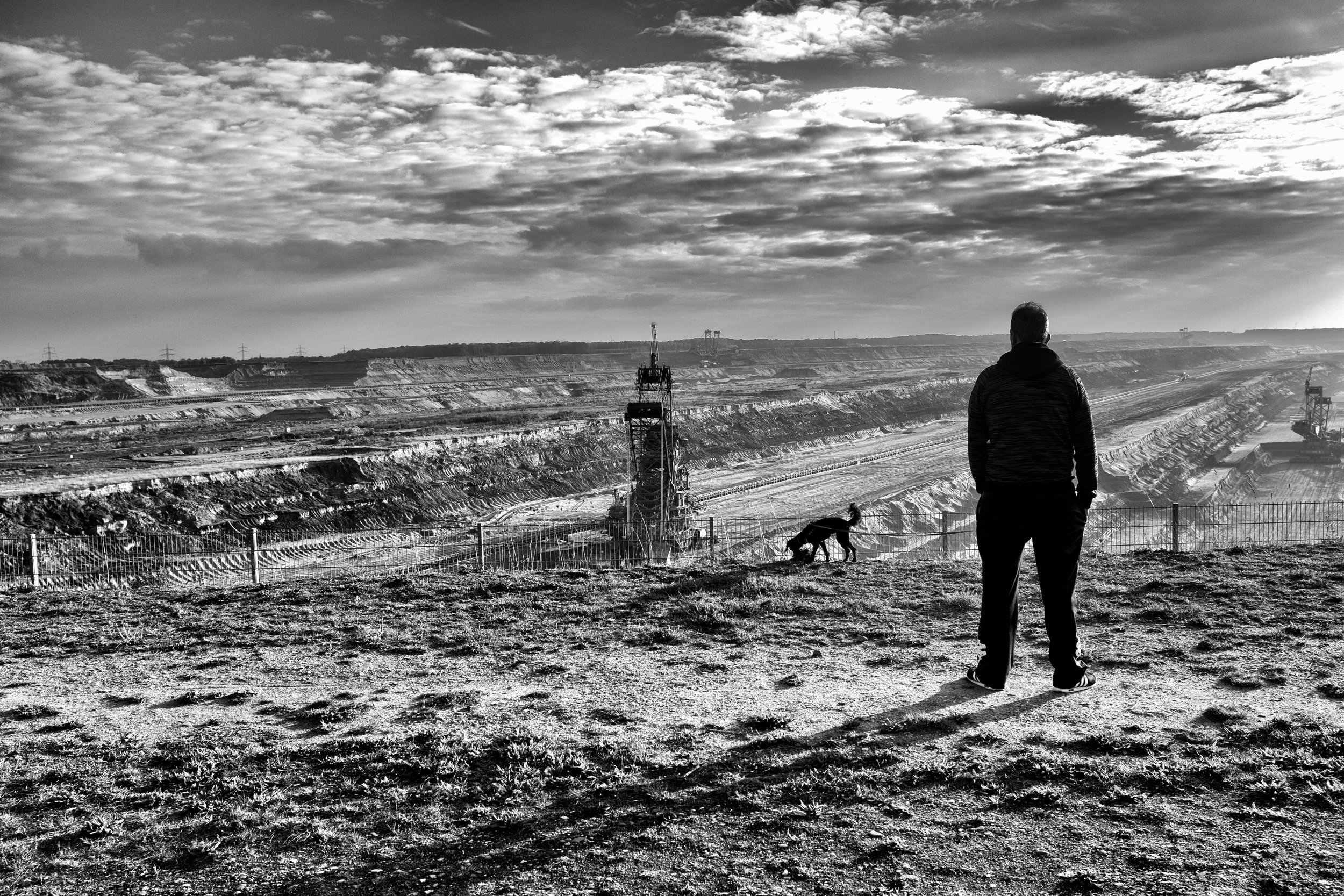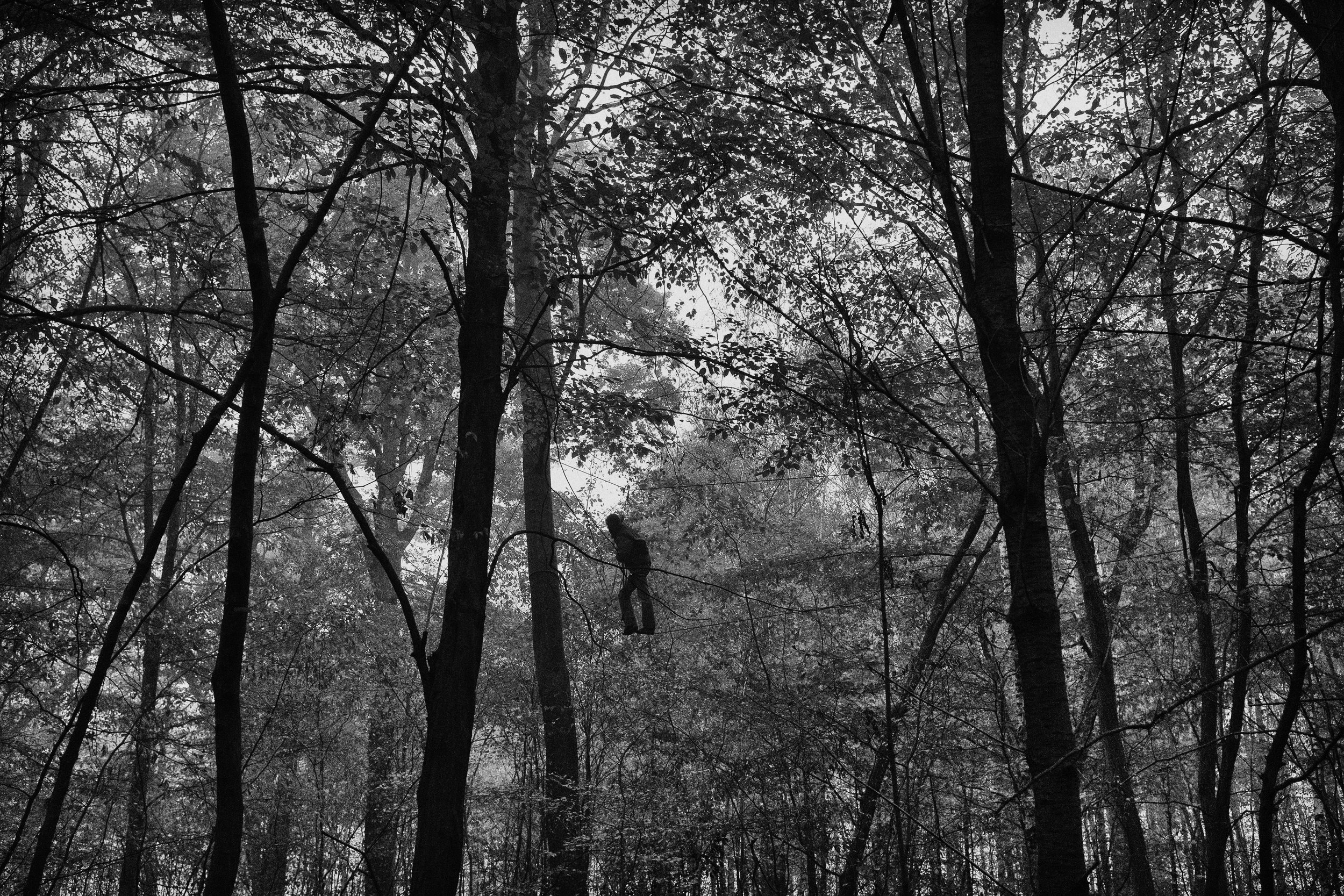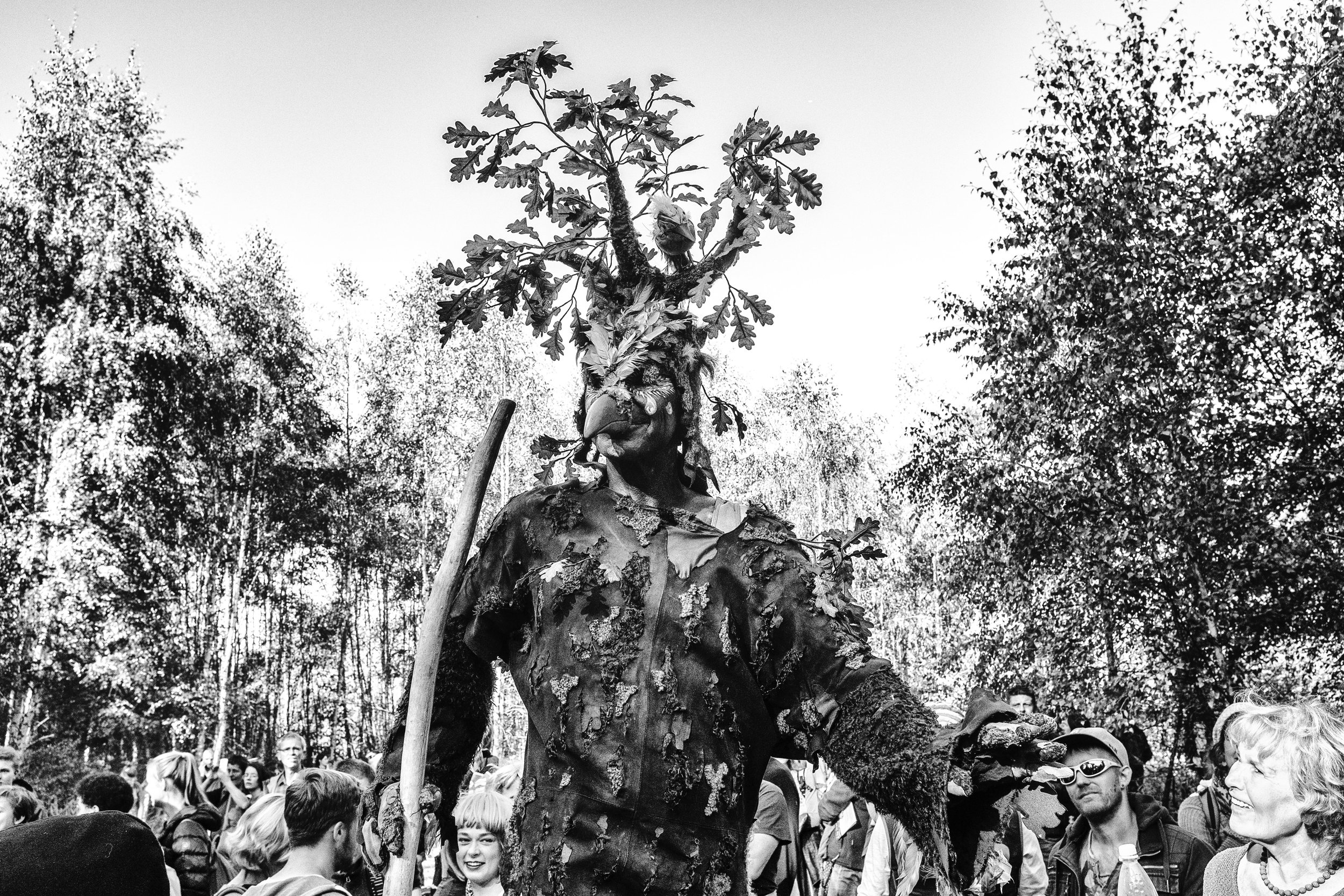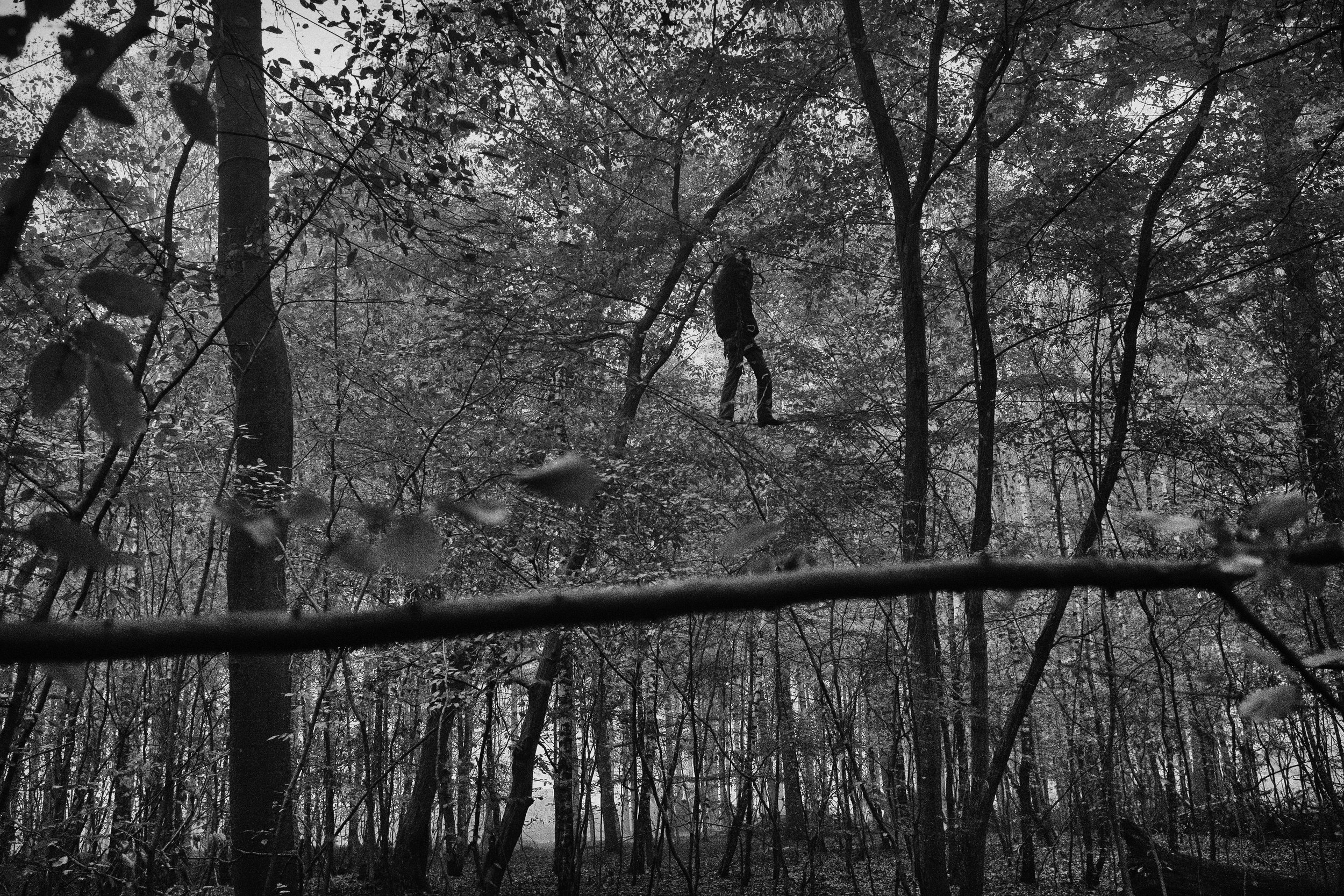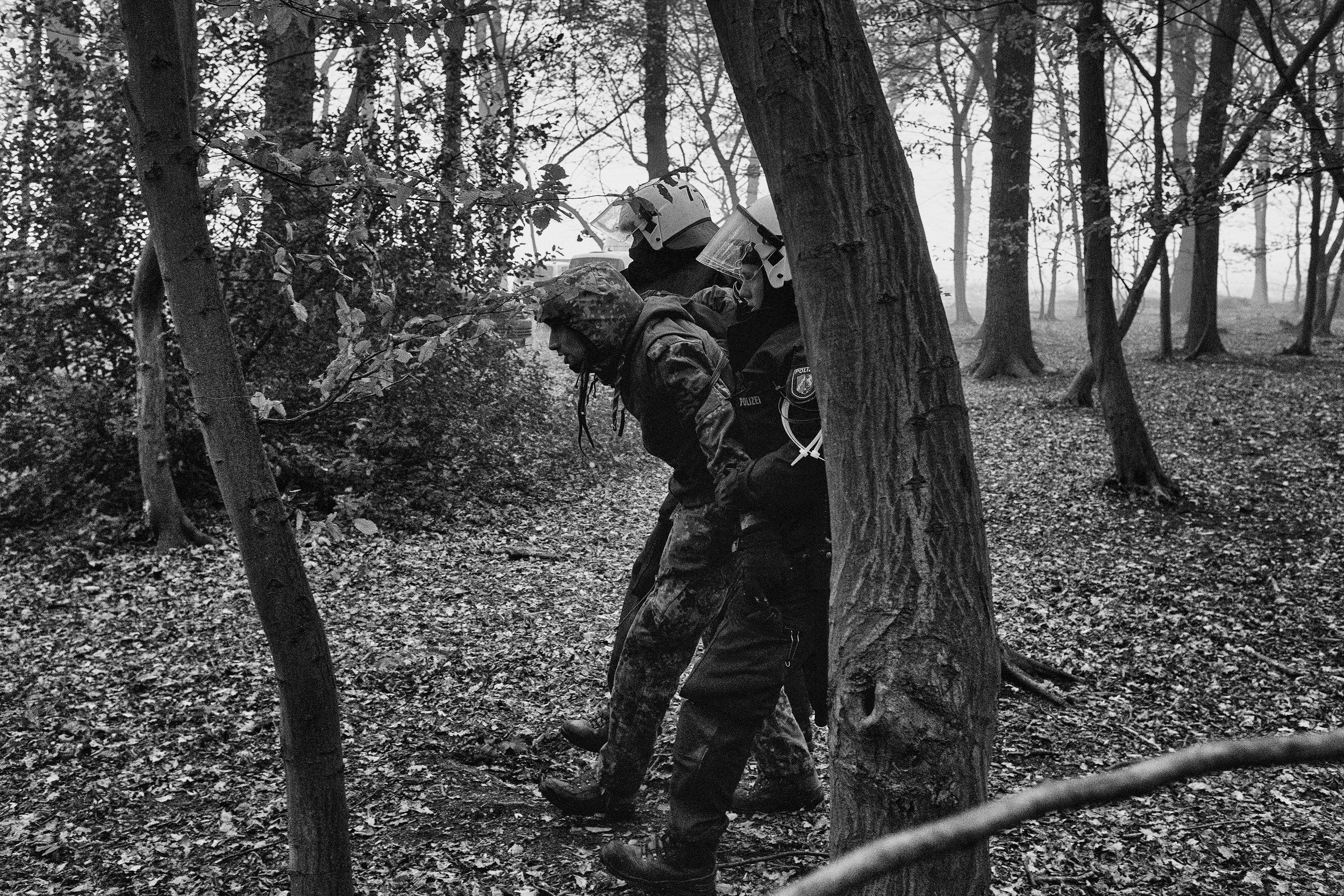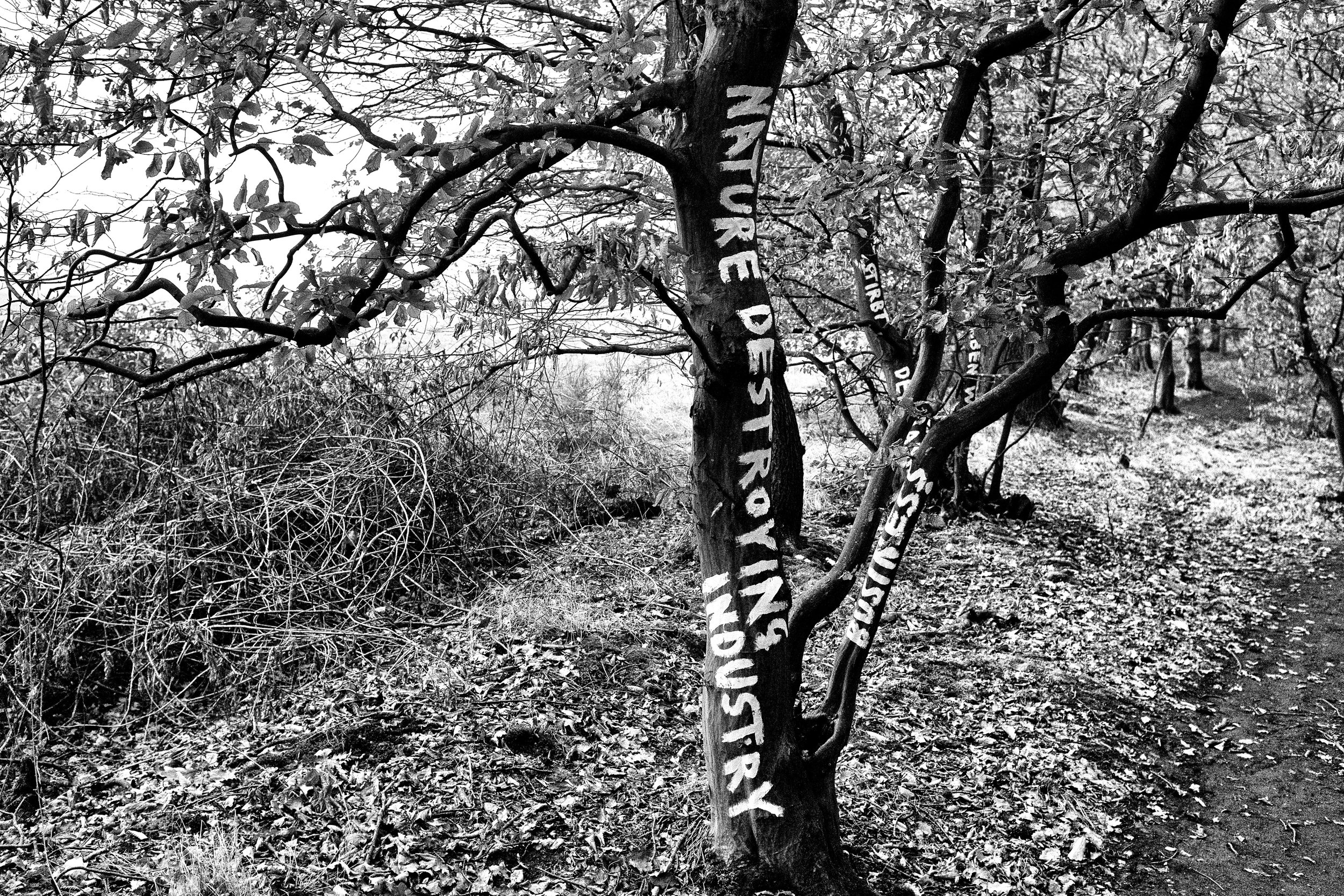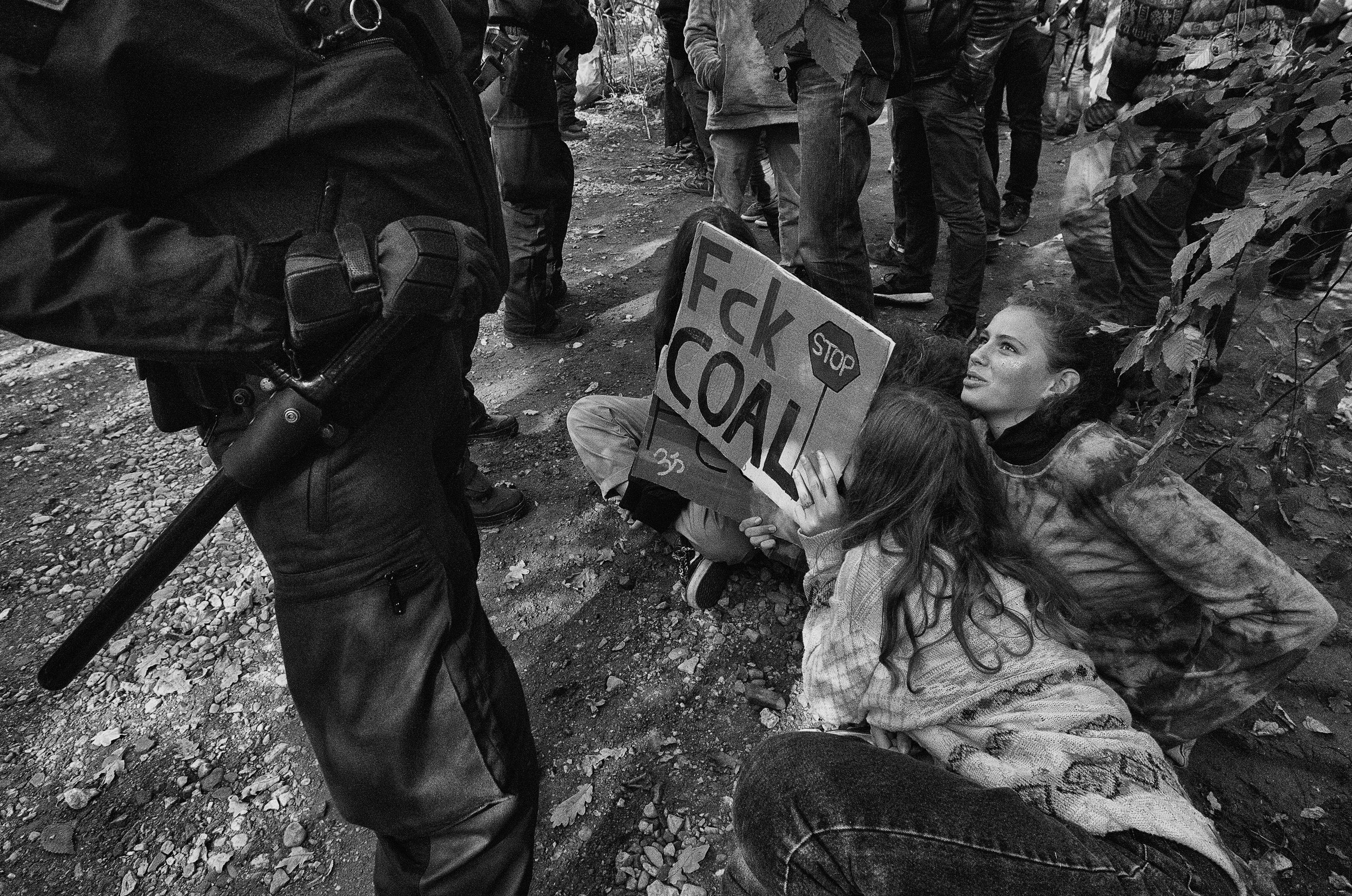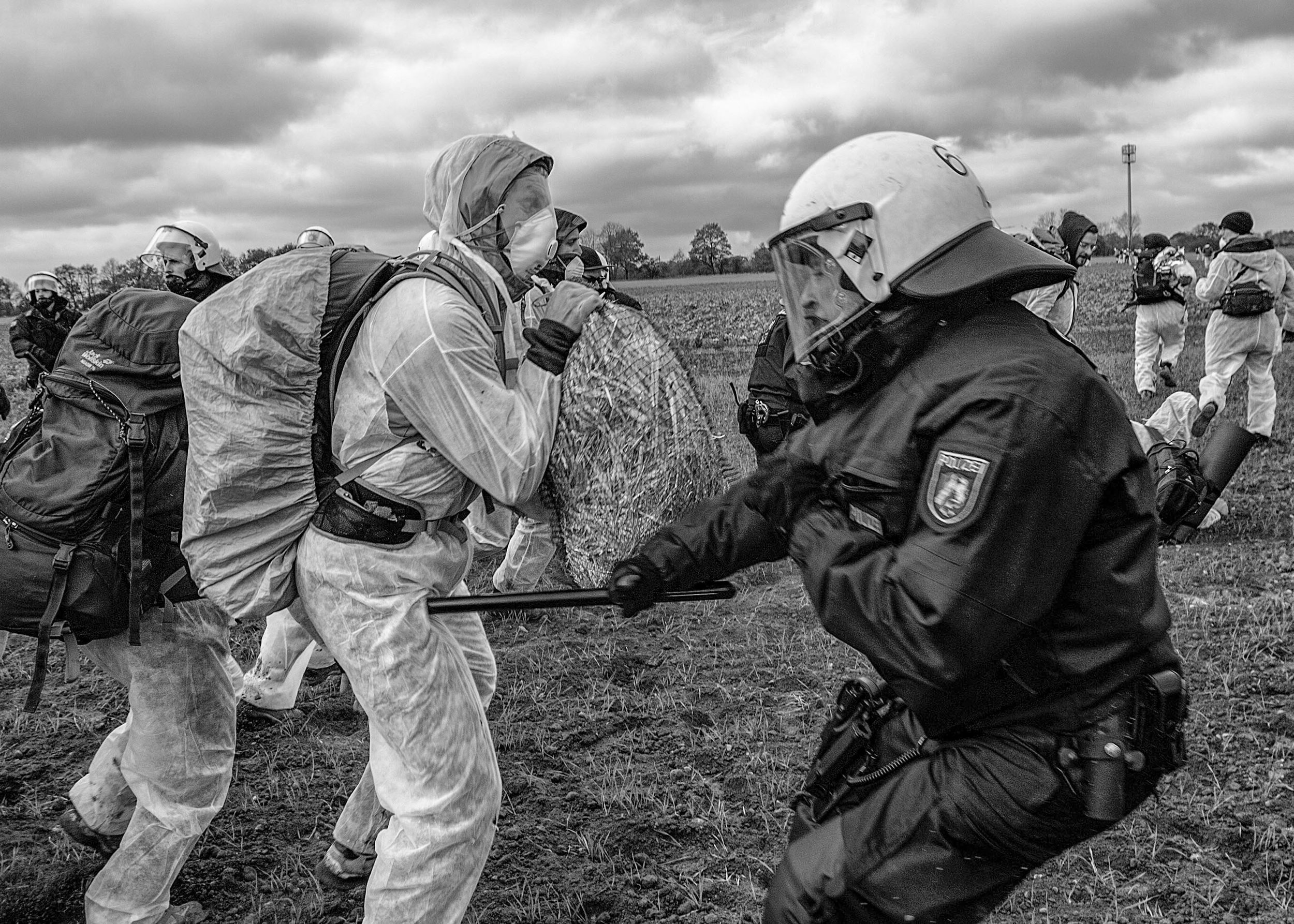Hambi forest
The Hambach forest in Germany is threatened by the furious and voracious appetite of the RWE mining company to excavate the lignite formed millions of years ago. Lignite is cheap as a fossil fuel and is used to power stations. Germany, together with Poland are the largest emitters of CO2 pollutants in Europe. At the global level, the countries have agreed to reduce CO2 emissions since they contribute to fuel Climate Change.
There are 10 years left for all the inhabitants of the planet Earth to stop the CO2 emissions, since it will increase by 1.5 C or more. This increase in temperature will accelerate the process of global warming. In fact, the Arctic ice has drastically lost its mass, generating the increase of the oceans and, consequently, the flooding of thousands of cities and coastal islands.
The Hambach forest (a.k.a. Hambi) is an old forest located in North Rhine-Westphalia, West Germany, between Cologne and Aachen. The owner RWE AG is expected to clean it as part of the Hambach surface mine. There have been ongoing protests and occupations to avoid this since 2012.
The Hambi forest is rich in biodiversity and hosts 142 species considered important for conservation. Oaks, hornbeam and lily of the valley live in Hambi and have been called “the last remnant of a forest ecosystem since the end of the last ice age”. Only ten percent of the Hambach Forest still remains, and the remaining forest is severely threatened by brown coal mining.
The rare Bechstein’s bat population, is strictly protected according to annex II and annex IV of the European Habitats Directive. An Environmental Impact Assessment study has never been conducted. The Administrative Court in Cologne denied the necessity of such a study in November 2017 because the permission for mining operations was given in the 1970s, long before Environmental Impact Assessment studies became mandatory.
In January 2020, the preservation of the Hambach Forest was agreed at a top-level meeting of the German government and the four federal states affected by the coal phase-out. The "Roadmap for Coal Phase-out" law was passed in July
The struggle of environmental activists managed to halt what little remained of the centuries-old forest. It claimed the life of a journalist who fell from one of the houses built at the top of a tree, thus preventing its felling. Every weekend for months and years, other activists came to bring food, clothing, and encouragement. The police charged repeatedly, there were illegal arrests, and an army of lawyers protected the rights of each detainee. The German justice system stopped the disaster, and Hambi became a symbol of solidarity in the fight to protect nature and against the power of the powerful.
Gallery images of the long term project from 2018 to 2020. There were protests and occupations from 2012 against this, and in 2020 a law was passed to preserve what remains of it.
